

Marshall Rogers BrightestDaysandDarkestKnights
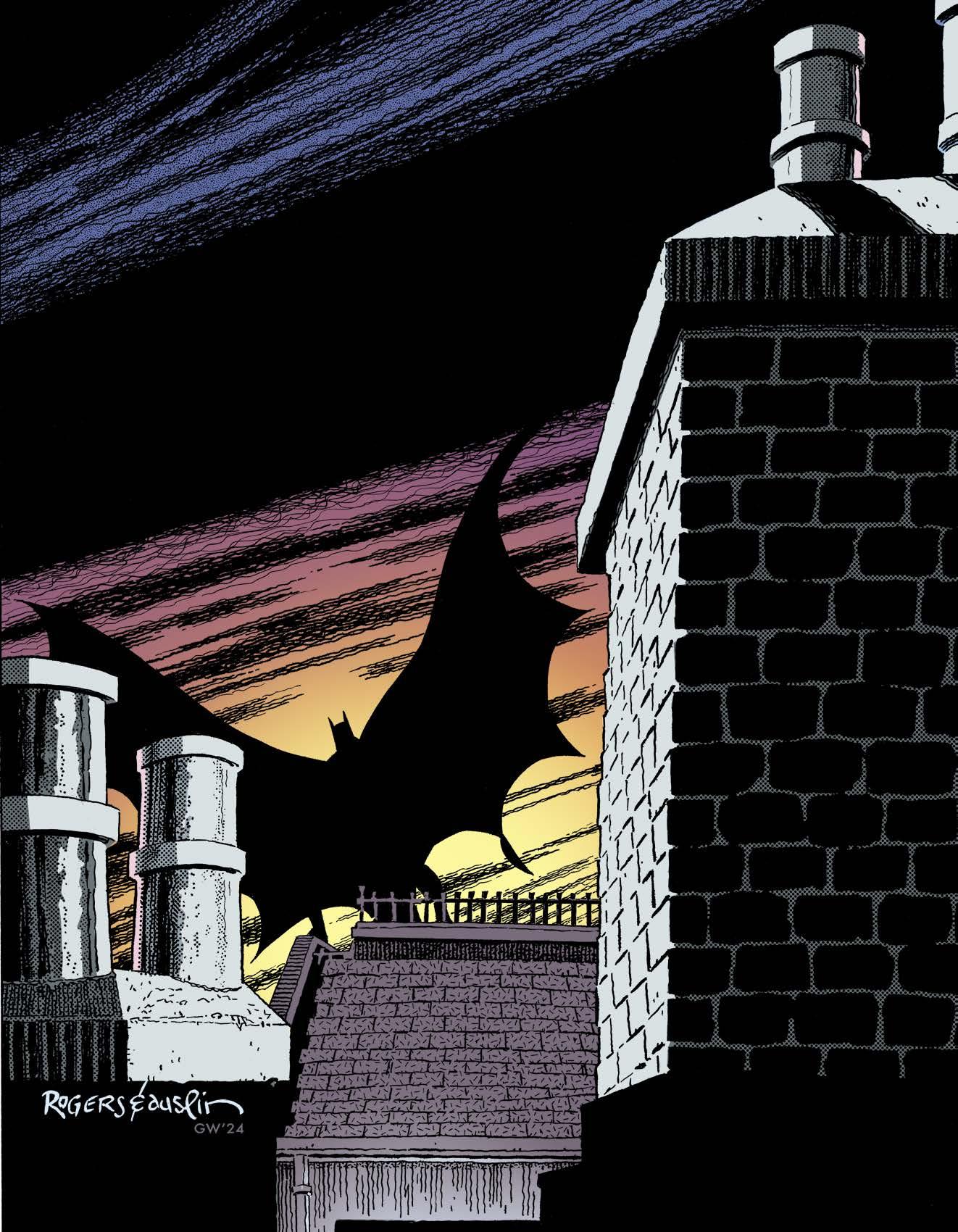
by Jeff Messer and Dewey Cassell


A SISTER REMEMBERS
Suzanne (Rogers) Schmachtenberger Interview
Conducted
2019 by Dewey Cassell
Transcribed by Steven Tice
DEWEY CASSELL: Are you younger or older than Marshall?
SUZANNE SCHMACHTENBERGER: I’m six years younger than Marshall.
CASSELL: So, my understanding is that Marshall was born in Queens. Is that right?
SUZANNE: Yes. I was born in Dobbs Ferry. In 1952 my parents moved to Ardsley, New York, so Marshall would have been two. I was yet to be born. And Ardsley and Dobbs Ferry are adjacent towns.
CASSELL: Tell me a little bit about your parents. I assume your father was William Marshall Rogers, Jr.?
SUZANNE: Correct. My mom was Ann Palmer-White.
CASSELL: What did your dad do for a living?
SUZANNE: My dad was a mechanical engineer, graduated from Pratt. He was from Paducah, Kentucky. And he worked for Johns Manville. That’s a mechanical engineer.
CASSELL: Did he do that all of his life?
SUZANNE: He did.
CASSELL: That’s unheard of these days.
SUZANNE: Well, he died young. My dad died, just like Marshall, of catastrophic heart failure. My dad was 57 when he passed away.
CASSELL: And what about your mother?
SUZANNE: My mom did not work outside of the home in the traditional sense. She was a “stay-at-home mom,” and I put that in quotes. My mother was a fabulous seamstress and sewed everything for everybody in the house, forever. And she did alterations in the house for a select clientele. She did that forever. We moved to Colorado in 1971. Right before we moved
to Colorado, she got a job, a part-time little something at Stretch & Sew, which was a big deal way back in the Seventies. She taught classes: how to sew and stretch. And so, when we moved here to Colorado, she did that for a little bit, until my dad died. My dad died 18 months after we moved here. We left home, came out to Colorado, and I’m going to say this tongue-in-cheek: where there were no shoe stores, and no good Jewish delis, and no friends, and then he died.
CASSELL: But you all stayed.
SUZANNE: Well, we did. We’d been here 18 months. By then I was a junior in high school. And if we moved back to New York, my mother said we couldn’t move back to Ardsley. I’m like, “Well, then why would I move?” I was 17, and in my own sad world, I didn’t think about how much my mother would have loved to have been back in New York. My mother grew up in Queens. So we stayed here. When we moved here, my parents and I, Marshall chose not to move with us. He was 21 when we moved.
I’ll tell you something about my parents: I had this mother who was a fabulous seamstress. I’m not exaggerating when I say that. She could look at anything and make it beautifully. Until she passed away, when I was 51, I never bought a winter coat, because she made them, and they were gorgeous. So that’s my mom—one of her many


CHAPTER 1
Marshall and his sister Suzanne, Christmas circa 1983. (courtesy of Suzanne Schmachtenberger)
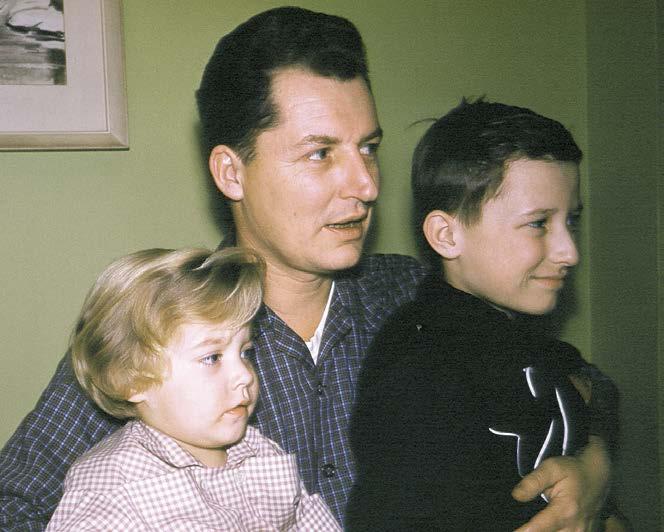
talents and skills. My dad was an engineer by day, and a fabulous wood craftsman/carpenter by night. So he had his wood shop, and my mom had her sewing room, and they made all sorts of things.
CASSELL: What kind of things did your dad make?
SUZANNE: Well, we lived in an 1100 square foot house, and he put an 1100 square foot addition on our house, and then he did all the cabinetry inside the house. Do you remember FAO Schwarz? They had a bear house that I really wanted when I was very little, and he copied it for me. It looks like a tree stump, with a roof that comes off, with built-in bunk beds; it has a little fireplace, a little kitchen area, and it looked just like it came from FAO Schwarz; and I know that it didn’t, because I went to the basement unannounced and saw him making it. I was pretty sure there was no Santa, but that’s what solidified it. So Marshall and I grew up in a very normal house with two very talented parents.
CASSELL: So six years apart, did you play much together as kids?
SUZANNE: You know, semi. Marshall was always, always a really sweet person, at least always from my perspective, and he was a sweet big brother. As far as he could be inclusive of a little pain-in-the-neck, six-years-younger sister, he was always sweet about me tagging along, or telling me no, no way, go away. But, for the most part, he was just always very sweet to me, and inclusive in whatever he could be inclusive in. Not everything, certainly. But in the neighborhood we grew up in, there was a group of kids. His friends were all about the same age, plus or minus two years, and then there was the next wave of kids; we were the younger siblings
of all those kids. So we were all friends, a small group of friends, and then Marshall and his friends were all friends. And they would let us come play, like, football with them. That’s probably it. We just played football with them, and we did that a lot. Our yard and our neighbor’s yard was just perfect for a football field. He’s six years older than me, so there’s things that I never did with him, obviously. He went away to boarding school his junior year. He repeated his junior year. His grades weren’t as good as my parents thought they should be, and they thought that he should grow up to have a nineto-five type job. So he went away to Blair Academy, and I think that was ’68 to ’69. So when he came back, he and I ended up going to the same high school. The school district we were in was building a new middle school, junior high. I don’t remember what they were going to call it. So our school was seventh grade through twelfth grade. So he was a senior that year that I was a seventh grader. He drove me to school every morning in his Triumph TR3. He played football and he was good at football, so all the girls thought he was cute, and they were just delighted that he drove this TR3, and he would drop me off at the young kids section, the seventh and eighth grade wing, and there would be just a bevy of girls sitting in the window waiting to see Marshall in his TR3. And then he would drive past the school and go pick up his girlfriend, and then come back. But he was very popular. He was popular enough that I could sell his photographs, and I sold some of his socks to girls.
CASSELL: Oh, you’re kidding! SUZANNE: I am not.
CASSELL: I didn’t know he was an athlete. That’s interesting. SUZANNE: He was. And he was a wrestler. He was very good at wrestling. He would use me as a dummy. I don’t think I learned any wrestling moves. He was very good at pinning me.

Suzanne and Marshall with their father. (courtesy of Suzanne Schmachtenberger)
Marshall played football at Ardsley High School. (courtesy of Suzanne Schmachtenberger)
CHAPTER 2

INDEPENDENT SPIRIT Arvell Jones, comic book artist

“I met Marshall in the early ’70s when I, Tom Orzechowski, my brother Desmond, Joe Wesson, Greg Theakston, Mike Kurcharski, and Richard Buckler worked on our fanzine Fan Informer. I really don’t remember much about our encounters (we were all pretty busy trying to break in to comics).
“He produced a couple of spot illustrations and a cover for the fanzine. I know he was passionate about getting into the field and he was a huge Batman fan.
“I remember him letting me know he was going to get to draw my co-creation of Misty Knight and he was excited to get my reaction. I was proud that he made it into the industry and I was alway excited to see his work.
“He was in some ways one of the most creative with design and style of any of us midwestern artists, which included Jim Starlin, Al Milgrom, Mike Vosburg, Keith Pollard, Terry Austin, Greg Potter, Sam De La Rosa, Aubrey Bradford, Mike Nasser (Netzer), Ken Stacey, and Don Vaughn. We were all very
happy with any of us getting an assignment and starting a career in the business.”
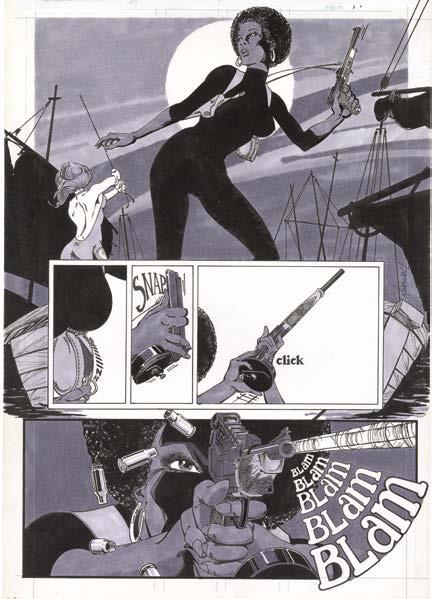
Michael Netzer Remembers the Early Days
Interview conducted by Jeff Messer
JEFF MESSER: When, where, and how did you first meet Marshall?
MICHAEL NETZER: I had been at Neal Adams’ Continuity studio for about three months when Marshall first visited the studio and liked it enough to ask about renting table space for drawing comics. I was also drawing the Batman/Kobra issue [DC Special Series #1 (1977)] when we first met. I had a table in the large back area that sci-fi artist Mike Hinge maintained and worked from. Neal had plans for one more room to be partitioned from the large space. So the next thing I knew, Marshall and I were sharing a newly constructed room tailor-made for us, with two tables and cabinets—and a nice black leather two-
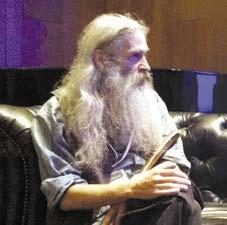
Michael Netzer
seater that was tucked away in a corner of the back room. Being next to Larry Hama and Cary Bates’ rooms, a second hub of comics activity was growing in the back area of the studio.
Elite Avni-Sharon / Wikimedia Commons.
© Michael Netzer
Marshall was a tall and jolly fellow, while I was a lesser 5’-3” height—and he was about six years older than I (a quintessential expression of an odd couple). It was a different time and world back then—still alright to smoke cigarettes in the front room, but that was also about the time, early 1976, that more and more people began complaining about it. Marshall and I declared our room a smoking area. We hardly worked on a page without first rolling a joint on it. We worked together for a total of about three years.
The Daughters of the Dragon in action from Deadly Hands of Kung Fu #32, 1977.
Arvell Jones Tenebrae
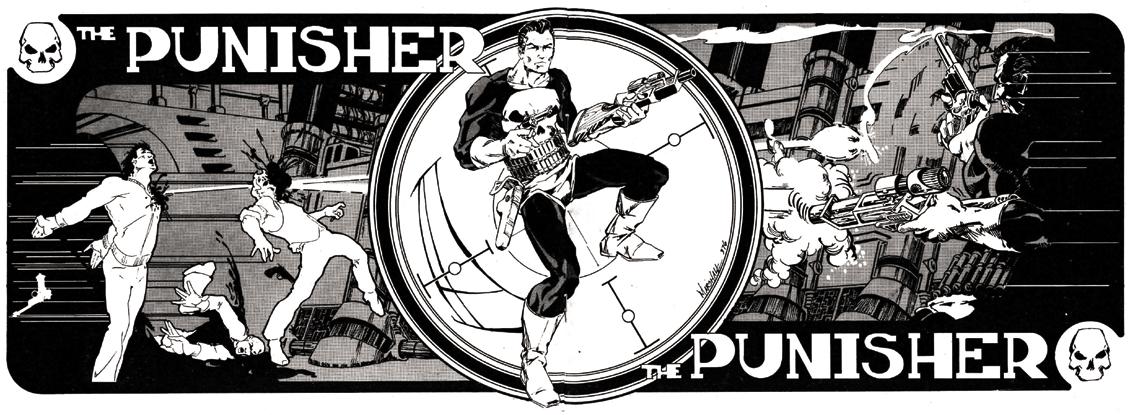
MESSER: What was it like in those early days, working to succeed in comics?
NETZER: One of the more intense life challenges has been to evolve from a would-be, to a good enough comics artist. Marshall seemed to feel the same way. We both worked our brains and arms off, spending between 12–16 hours daily on the board. We were very lucky to work closely back then, in a studio like Neal’s, which helped and energized the entire experience. We thirsted for criticism of our work, especially from the many seasoned pros whose advice could help improve the art in ways that we didn’t think of. The difference between our work was always a subject of discussion between us, and we had no problem criticizing each other.
Long before computers and the internet, reference photos were hard to come by. We basically had to dig through magazines or go out and buy them for reference. There were no shortcuts available, and if either one of us could finish a page in one day, we considered it a worthwhile achievement. It still boggles the mind that a beginning artist who had to work much harder to come up to speed, was making less money per hour than the guy sweeping the floor at McDonalds—in an industry that makes billions from the raw stories that creators produce for pennies.
The rest of the studio; the communal working environment; the proximity to top comics creators and projects in production, all made those first few years very significant for our ability to continue improving. A lot of hard work and a lot of comraderie defined those early days for the gang of grown-ups playing with kid toys that we were.
MESSER: What was Marshall like when you first met and were hanging out together?
NETZER: We were worlds apart in our life experience and approach to comics art, but we both influenced each other in very subtle ways. We hung out together by the force of group gravity. Marshall quickly became best friends with Chris Goldberg, a fan and later professional writer with whom I shared an apartment and who
frequented the studio. For the most part, I was actually the odd one out, trying to absorb the zany comics talk like a deer in the headlights. The bottom line was that the endless hours working together seemed to override anything else that differentiated between us. There was a wonderful and inspiring chemistry there. We were very involved in each other’s work because our approach was so different—and I believe we both appreciated the other’s influence.
Marshall was always pleasant to be with. I can hardly remember ever seeing him upset or despondent. He liked to talk about the essential storytelling element of our work—he preferred mood and design over the wave of semi-realism that swept the comics through the Adams era. More than any other artist I knew, he seemed to have a lot of courage to take this direction, mostly against the then-current tides that I myself was immersed in.
MESSER: When he got his break and did the art for Detective Comics with Terry Austin inking, they both suffered a backlash from Joe Orlando and DC editorial, who savaged the artwork. Were you privy to Marshall’s feelings about how he was being treated by editorial? And after the comics were a huge success, how did that change things for Marshall?
NETZER: Marshall was upset and apprehensive at first. Who wouldn’t be in that situation where your newly chosen vocation in life hangs in the balance? But we were able to talk it through and minimize the significance of editorial opinion so early on in the game. I had one such experience with an editor over a Princess Projectra back-up in a “Legion of Super Heroes” story, that had too many full-page splashes (I thought it worked and the editor finally agreed it was better to go with it than change it). The only thing Marshall could do was persevere and hope that more and more editors would recognize the appeal of the Batmanesque mood that he’d injected into the character. Once the tides changed, and Marshall’s star began to rise, he became far more secure in his approach to the work—and much less apologetic for the new look he brought to a favorite superhero icon.
Punisher centerspread art by Rogers from Marvel UK’s Super Spider-Man #180, 1976. (courtesy Jason Schachter)
COYOTE
Rogers drew Steve Englehart’s newest creation for Eclipse. This was several years after they teamed up on Detective Comics, and followed a few smaller projects for Eclipse (Scorpio Rose and Cap’n Quick & a Foozle). In the rise of creator-owned comics, Eclipse was offering creator-ownership, and attracting some top talent, like Don McGregor, reprinting his Detectives Inc. collaboration with Rogers.
Rogers must have felt comfortable with the promise of ownership, as well as the creative freedom, which allowed for more adult themes, nudity, and an interracial relationship, which was, at the time, somewhat controversial.
Englehart’s Coyote was part superhero, part mystical character: a young Native American man who grew up in the desert outside of Las Vegas, and was imbued with magical powers that allowed him to shapeshift and teleport.
Coyote appeared serialized in Eclipse magazine, which was the fledgling company’s

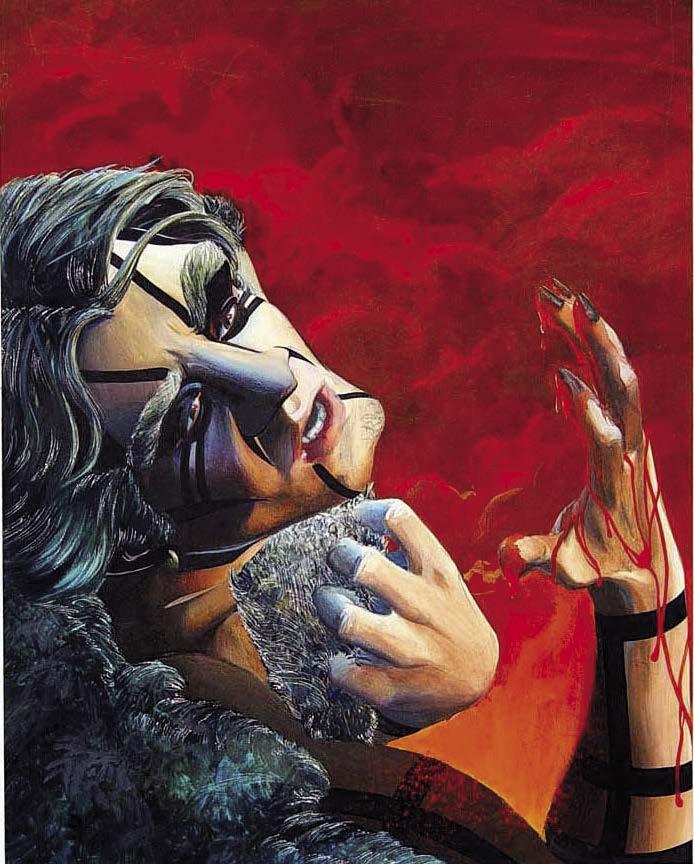
attempt at their own sort of Heavy Metal or a classic Warren black-&-white magazine of the 1970s.
The series ran from issue #2 (published in 1981) through #8 (published in 1983), and was later collected as a graphic novel in January 1984, this time colored.
Englehart took the property to Marvel’s Epic line soon after, with new artist Steve Leialoha taking over art chores from Rogers on the first two issues, followed by a single issue by Jackson “Butch” Guice, and the rest of the run by Chris Truog. Issue #11 features a back-up story, with first time comics artist Todd McFarlane making his comics debut.
(Above) Coyote painting for the cover of Eclipse Magazine #8. (Left) Coyote splash page. (courtesy of Phillip Hester)
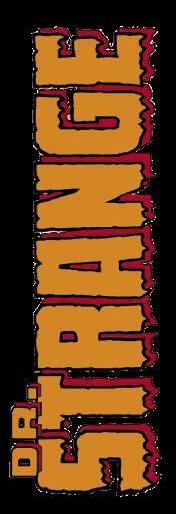
PUBLISHER: Marvel Comics
TIME PERIOD: 1981–1982
BOOK/COMIC TITLE and ISSUE NUMBER(s):
Doctor Strange: Master of the Mystic Arts #s 48–53
Marvel Fanfare #5
FORMAT: Comic book
OVERVIEW: Doctor Stephen Strange is a gifted but arrogant surgeon who has a car accident that costs him the use of his hands. Searching for a cure for his infirmity, Strange encounters the Ancient One. From a world defined by the practical application of skills and tools, he is thrust into a world filled with the abstract and fantastical, like it was taken straight from a dream—or a nightmare.
Created in 1963 by Steve Ditko, Doctor Strange first appeared in the pages of the split-book Strange Tales #110, alongside first the Human Torch and later Nick Fury, Agent of SHIELD. The book was rebranded Doctor Strange as a solo title with issue #169 and continued through the last issue, #183. The character then appeared in Marvel Feature and Marvel Premiere before Doctor Strange: Master of the Mystic Arts was launched in 1974.
KEY CHARACTERS:
Clea – Strange’s love interest and disciple in the mystic arts. Wong – manservant and confidant of Doctor Strange.
Baron Mordo – Strange’s oldest enemy, a former student of the Ancient One who turned to evil.
Nightmare – Recurring adversary of Doctor Strange who can invade and manipulate our sleeping thoughts.
SETTING(s): New York City, the Sanctum Sanctorum of Doctor Strange, various historical venues, and the supernatural world.
SYNOPSIS of KEY ISSUES:
Doctor Strange #49 – Doctor Strange defeats Baron Mordo by having his astral form inhabit the body of a cat.
Doctor Strange #51 – Features not only Dormammu and Adolf Hitler, but Nick Fury and the Howling Commandos.
Doctor Strange #53 – Having time traveled to the past, Doctor Strange (in his astral form) is witness to the first meeting of the Fantastic Four and Rama Tut. Meanwhile, Nightmare encounters a Gnit (or two) and Clea leaves.
Marvel Fanfare #5 – Clea saves Doctor Strange when he is attacked by the sorcerer Nicodemus. P. Craig Russell inked this issue, giving it a different feel than the Austin-inked stories.
BEST ISSUE: Rogers’ rendition of the Sorcerer Supreme on the cover of Doctor Strange #49 is a fan favorite and the battle with Baron Mordo is captivating, if brief, but the story in issue #53 has a wonderful blend of adventure, pathos, and humor in which Rogers excels.
MARSHALL ROGERS’ CONTRIBUTION: Although his tenure on the book was short, Rogers makes masterful use of different textures in his art and diverse page layouts, giving depth
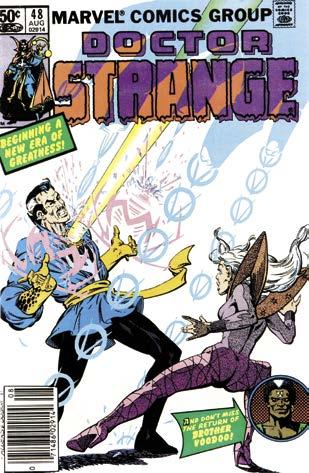


TERRY AUSTIN
Terry Austin’s name as an inker frequently appeared next to Rogers’, most notably for their time together drawing Englehart’s Detective Comics scripts. And while few at DC seemed to be fans of those issues at the time, nor did they have faith in the art team, those comics would become some of the most iconic tales of Batman to ever be published.
Austin was gracious enough to agree to an interview about his relationship (creatively and personally) with Rogers. However, what started as a simple Q and A gave way to a vastly more entertaining and free-flowing series of essays of memories and misadventures. Austin wrote back in elegant, honest, and insightful essays.
Eighth Street and introduced me to one of the artists I most admired in comics!
Neal glanced over my samples, cut me to ribbons in no uncertain terms, thrust a page of Bob Brown’s “Lilith” in my hands and said “Here’s a nice pen and here’s a nice brush and there’s a nice table—get to work!” That was how I joined the merry band of Crusty Bunkers at Continuity Associates.

It was instantly clear that Austin held Rogers in high regard—and that his essays should be included free of interviewer questions. Here’s Terry Austin’s tale:
FIRST PROFESSIONAL WORK, AND MEETING:
I had met Al Milgrom for maybe five minutes at a comic book convention in Detroit a year before I graduated from Wayne State University and moved to New York in order to try to get work in comics. Allen had looked at my work and said, “If you ever get out to New York, you should go up to Continuity and show your stuff to Neal Adams.”
So, I stumbled out of somebody’s office at Marvel a year later (having been thoroughly rejected once again) and Milgrom was standing there and, for some unfathomable reason, he remembered me and said, “Terry! Hey, did you ever go see Neal?” and he literally walked me down Madison Avenue to Forty
It was about a week later that I was sitting at that table, feeling my way along inking window sills and door frames on that “Lilith’’ job for one of Marvel’s black-&-white vampire magazines, that I learned Dick Giordano, Neal’s partner in Continuity Associates (which was actually a commercial art studio that used comic book artists to do commercial jobs for advertising agencies and such) was looking for someone to ink backgrounds for him on his comic book work.
Happily, I happened to be sitting closest to Neal when Dick asked him to suggest someone, and I became background inker/ assistant to one of the nicest, most knowledgeable guys in the business.
I absolutely loved inking backgrounds for good ol’ Dick on whatever he did for the next two or three years—stuff such as Bram Stoker’s Dracula, Stephanie Starr, Batman, the Elongated Man, Red Sonja, Thor and Conan. It was inking the backgrounds for Dick
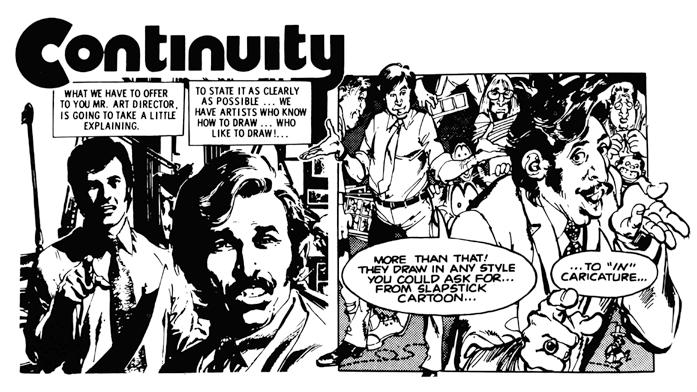

CHAPTER 3
Terry Austin
From a promotional piece for Continuity Associates, featuring Neal Adams and Dick Giordano.
Immortalized on a billboard in Superman vs. The Amazing Spider-Man, inker Terry Austin makes a name for himself, 1976.
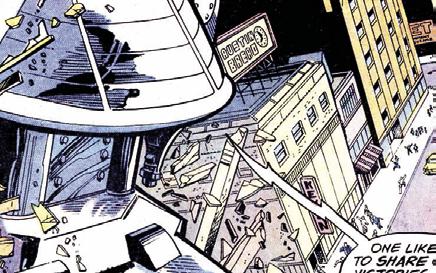
The first collaboration between Rogers and Austin: A Hawkman vs. the Calculator backup story in Detective Comics #467, 1977.
on the first DC/Marvel crossover project Superman Vs. The Amazing Spider-Man that brought me some added attention (completely unintended) as I had put my name in the backgrounds every couple of pages on a billboard advertising Austin Bread or some such, not realizing that everyone in the comic book industry would be reading that history-
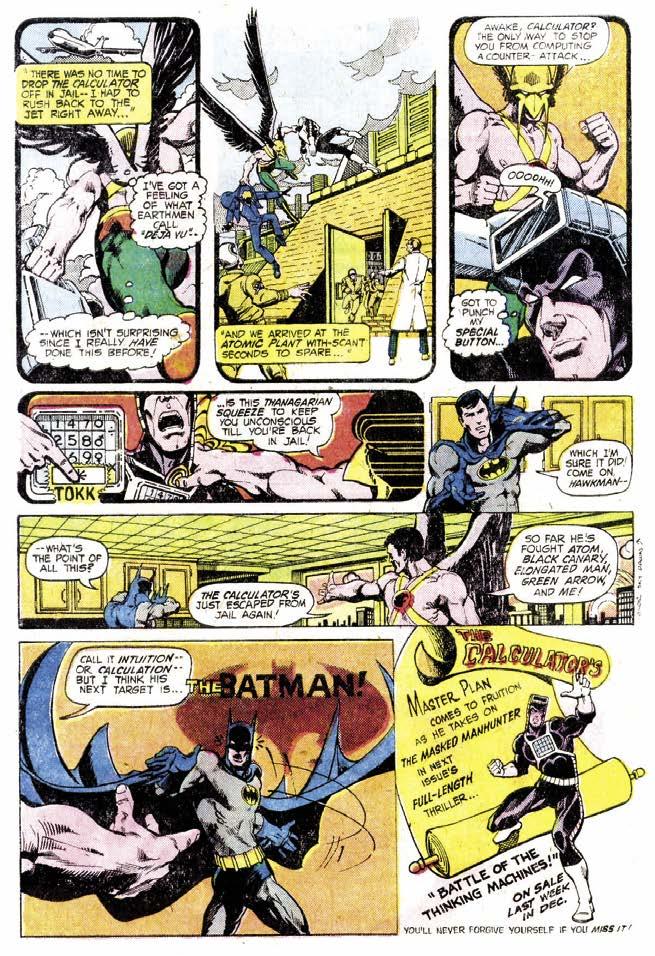
making book and that they would be seeing the name Austin over and over, and pretty soon everyone would be asking, “Who the heck is this Austin guy who inked all of New York City in this comic book?”
With that job, and Dick’s taking on a couple of back-up jobs where he let me start inking figures and seeing to it that my name appeared in the credits, pretty soon some folks decided to give me a chance inking some of the back-up jobs at DC.
MR. AUSTIN GOES TO DC
Julie Schwartz had assigned me the backup series in several issues of Detective Comics in which several DC characters who didn’t have their own titles each individually went up against a villain named The Calculator.
At the end of each chapter the hero would trounce The Calculator, and the bad guy would press a button on his vest which would somehow inoculate himself against being beaten by that hero again (ain’t comic book science wonderful?).
Written by Bob Rozakis, the first two chapters starring The Atom and Black Canary were penciled by Mike Grell. The third chapter featuring The Elongated Man was penciled by Ernie Chan.
Apparently I was working on that chapter when Marshall Rogers arrived in New York and, as everyone looking to enter the field of comic book art did in those days, made the pilgrimage to Continuity Associates to show their work to Neal. I found out later that Neal looked at Marshall’s work and said, “There’s a guy in the back who you ought to hook up with to ink your pencils.” All I knew at the time was that there was this new guy who came into my room, introduced himself, and seemed awfully interested in what I was working on.
Apparently he went up to DC (with an introduction from Neal) and told Julie Schwartz that he wanted to pencil The Calculator, having had the idea planted in his head by Neal that we could be a penciler/inker team.
In short order, Marshall was renting space in the back room at Continuity and penciling the next two chapters featuring Green Arrow and Hawkman slugging it out with The Calculator.
That would have been it for the nascent Rogers and Austin team, as the final chapter
of the saga of The Calculator was to be a book-length epic in which the villain smacked down the five heroes that had previously beaten him soundly (remember that handy inoculation) and went up against Batman himself, the star of Detective Comics, to be drawn by peerless professional Jim Aparo.
Marshall and I were told by the powersthat-be that Batman was too important a character to be trusted to a couple of bumbling amateurs, and we understood and prepared to move on.
In an unlikely occurrence that seemed to be right out of a 1940s movie where the star of the big Broadway show falls ill on opening night and the understudy goes on in their place and consequently become a Big Star, Jim Aparo got sick and at the last possible second, someone (Julie? Art Director Vinnie Colletta? Publisher Carmine Infantino?) decided to toss the all-important Batman job to the two new dumbells.
NOT EVERYONE WAS SOLD ON ROGERS AND AUSTIN ON BATMAN
I do know who didn’t make that decision: Joe Orlando, who had some sort of position of power in the DC hierarchy, and who hated my work and Marshall’s individually—so team us up on a lead feature, and his hatred reached new levels of fury heretofore undreamed of by mortal men!
On the day that Marshall turned in his pencils on the Rozakis Batman job, we were both summoned to Joe’s office. We had both been subjected to Orlando’s screaming critiques of our meager efforts individually, but this tagteam event was a new event not to be looked forward to.
I always said in retrospect that I owed Marshall one for what happened that afternoon; for, after sitting in the hallway outside Joe’s office for a good 30 minutes listening to him scream at Marshall about what an idiot he was, and how his lack of talent would undoubtedly lead to the ruination of National Periodical Publications, and how he should feel personally responsible for all the men who would be fired and thrown into the street with their wives and children to starve thanks to the destruction of this classic character that could be laid directly at the door of his pitifully meager efforts—Marshall emerged, white-faced and clutching the
nearest wall for support, and it was my turn in the barrel. I say that I owed Marshall because I entered that office to find Joe spent from Marshall’s dressing-down. Soaking wet with sweat, beet-red and panting from his efforts to make a kid feel small, he had nothing left for me. I innocently asked, “What approach do you want me to take on the job?” and he panted, “It doesn’t matter—you can’t save this sh*t! Get the hell out of here!”
After that, we were told that we would never be allowed under any circumstances to touch Batman again, and we were next teamed on a two-part back-up for the low profile Jack Kirby-less Kamandi book on a story of the far-flung future where humanlooking bulldogs in business suits fought giant insects in a devastated London (which would eventually see print in Weird War Stories after Kamandi was canceled).
SO, WHAT DID JOE ORLANDO’S OPINION REALLY MATTER?
Some time later, I was in the DC offices when Paul Levitz approached me and said (in the charming fashion in which DC apparently

Joe Orlando at the DC offices in 1978.
(Photo by J. Michael Catron)

trained all their employees in order to keep the freelancers humble), “A bunch of people with no taste wrote in who liked your and Marshall’s Batman job, so we’re giving you Detective Comics.”
I ran back to Continuity and broke the happy/sad news to Marshall—happy because it was a kind of vindication that we were doing something different that people responded to, and sad because it meant we could look forward to more time in Joe Orlando’s office with his vitriolic spittle hitting us in the face.
OPPOSITES ATTRACT GREAT COLLABORATION
During the Continuity years, I can’t honestly say that Marshall and I were exactly friends. Our working hours usually didn’t overlap: I was a 9-to-5 type (with additional
hours of labor thrown in during the evening at home) while Marshall unleashed his muse during the overnight hours. He was part of the crowd who indulged in certain pharmaceuticals that you couldn’t find at your local apothecary; me, I’m such a square, I’ve never even tried coffee.
I don’t know how Marshall felt about it in those years, but I always felt (and hold onto your hats as a non-sports fan is going to attempt a sports metaphor) like the guys you were thrown together with on a project were teammates.
Oftentimes these were guys you never even met, as you were routinely separated by great distances, and long-distance phone calls in those days were prohibitively expensive, and thus rare. But I felt like we were all part of the same team, working toward the same goal—that of doing good work and producing good comics—and so if someone made a mistake or slacked off in one area, you were there to quietly compensate for whatever was lacking, and hopefully they would do the same for you should the occasion arise.
So, while Marshall and I weren’t geographically separated in those years, we didn’t socialize—didn’t ever share a meal or go out to a movie—but like strangers in time of war, we were bonded by our common struggle in the trenches as we fought to gain a foothold in the industry that we both loved.
It wasn’t until we reunited many years later for Batman: Dark Detective that I can confidently say that Marshall and I became close. With the maturity that comes with the passage of time and the culmination of life experiences, when we again came together with a common purpose, we talked, we truly collaborated, we shared, we commiserated, we laughed, we even toured together and thankfully, we finally became great friends! To have had that happen before Marshall passed away is a gift that I’m inordinately thankful for!
A CRACK AT THE BAT
The first two issues of the Batman story that Steve Englehart wrote full-script in its entirety before leaving the country were illustrated quite capably by Walter Simonson and Al Milgrom during the time that Marshall and I were in our DC-imposed exile from the character (years later, after several reprintings
Fate gives Rogers and Austin their first shot at the Batman in Detective Comics #468, 1977.
of the whole story, Marshall and I offered to take a crack at those issues so that there would be a consistent look to the reprints, but were flatly turned down).
At first I wasn’t sure what to make of this story with this odd DC Doctor (Hugo) Strange that I had never heard of, and who the heck was Boss Thorne (keep in mind that the first two issues of the story by the other folks hadn’t been published yet), but certainly by the third or fourth part, I was aware that this Englehart guy was up to something quite extraordinary!
Looking back at those issues now, I can see myself still feeling my way along for the first three parts, still learning the craft. By the fourth issue, things are starting to gel, and by the fifth and sixth I see a new confidence in my approach and find little that I would do differently today (although zip-a-tone choices are always subject to second-guessing). I wish that it could have gone on longer but it just wasn’t to be…
As time went on, the book got later and later and as that happened, Marshall took shortcuts, putting down less on the pages in order to speed things up on his end. This was fine by me, as again, I thought of us as teammates, and if he was forced by circumstance to do a little less, I was there to backstop him
Cover of Detective Comics #471, the beginning of the Englehart, Rogers and Austin run on Batman, 1977. Below: Iconic image of Batman from that issue.

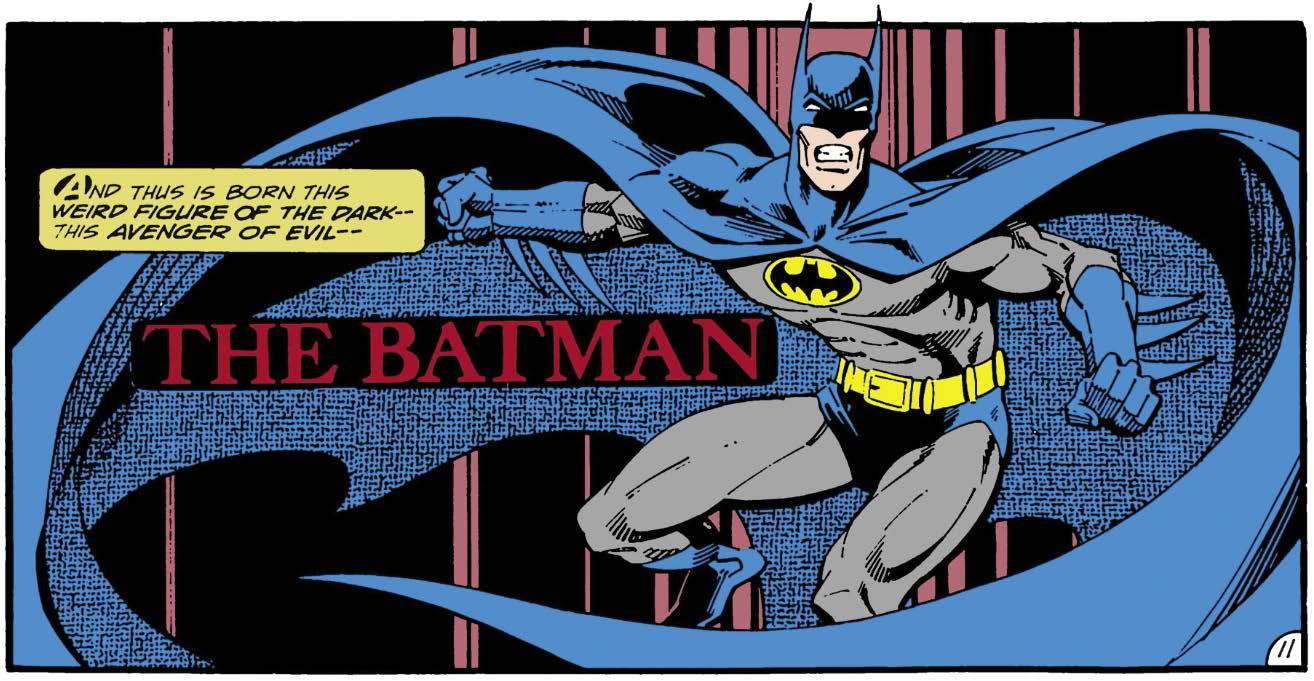
and happily contribute a little more.
One of the benefits of working in a studio like Continuity was there were older, wiser heads around to dispense advice and try to teach. My kind and benevolent mentor, Dick Giordano, was always attempting to hip me not just to artistic techniques, but also to the realities of the business of comics, saying things like, “I know you love what you’re doing and would probably do it for free, but you’ve also got to be realistic about it and don’t let the companies take advantage of you.”
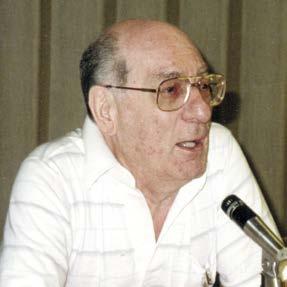
In this instance he would see the pages as Marshall was producing them and again after I had inked them and he said, “You’re doing more of the work than an inker should do—you’ve got to ask for a raise in your page rate.”
Well, I wasn’t about to risk doing so as long as we were illustrating Steve’s wonderful scripts, but when I turned in the last pages, I explained the situation to Julie Schwartz, our Editor, and asked for a raise.
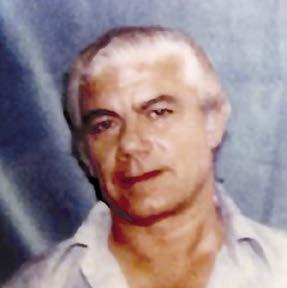
Julie seemed flustered and dragged me down to explain things to Art Director Vince Colletta. Vinnie seemed flustered and they both dragged me down to explain the whole thing over again to Joe Orlando (if you sense an “uh-oh” coming, give yourself a cookie for paying attention so far).
That’s where things went sideways. Keeping in mind that I wasn’t trying to get Marshall in trouble, imagine my horror when Joe started screaming, “Get Rogers on the phone and tell him to get his ass over here! By God, we’re paying him for pencils and I’m going to make damned sure that he’s going to give us pencils!” (Or words to that effect.)
With that, I was dismissed and wandered woozily down the hallway, thinking that Dick had never prepared me for this and feeling just awful that I had now gotten my teammate in trouble, and once again the wrath of Orlando was going to descend on him.
I did the only thing I could think of, which was to take a seat in DC’s reception area where I could see the elevator doors and wait there to warn Marshall.
Some minutes later, he arrived and I quickly explained what had happened and began to apologize as best I could while
warning him that he was going to be yelled at once again.
At that moment Julie walked past the door, did a double-take and hollered, “Marshall, get in here!” and Marshall and I exchanged a woeful glance as he walked away to what I could only imagine was going to be just short of his execution.
I went back to Continuity and waited terrified for Marshall to return. Return he did and when I asked him what had happened, he grinned and said, “They told me I’m doing a great job and gave me a big raise!” which seems mystifying unless you understand the pecking order in comics, and know that their mantra is that writers and pencilers are the important ones in the talent pool, and everyone else is expendable! I made the mistake of thinking that I was contributing something unique to the finished product and that the guys in charge would recognize its value.
Need I say that I quit the book at that point?
I walked away from the insanity that was DC and began doing more work for Marvel (where I was already inking John Byrne’s Uncanny X-Men) and where the people genuinely seemed happy to see you when you walked in the door.
The unfortunate part was I ran into Len Wein a day or two later and he broke out into a big smile and said how much he was looking forward to working with Marshall and I on Detective Comics, and I had to explain that it was nothing to do with him, but that I had had no choice but to quit the book. If I hadn’t already liked Len a whole lot, I certainly would have liked him even more as he looked absolutely stricken when I told him what had happened.
Before leaving the subject behind, I should probably mention the fact that other people (including my friends Berni Wrightson and John Workman) were treated well by Mr. Orlando and thought that he was a terrific guy. I have to believe that he saw nothing of worth in the efforts of either Marshall or myself and that his attitude toward us reflected the same.
MOVING ON FROM BATMAN
While we were working on our oft-reprinted Detective Comics run, Marshall was busy on some additional DC assignments, and
Vinnie Colletta
Julius Schwartz
box for coloring, I called Joey Cavalieri and asked what happened to Dave Stewart. “Oh, we couldn’t get him,” Joey replied, as if I was insane to even suggest such a thing.
As usual, Marshall pulled out his blue pencil to indicate which areas he would like to have me add a gray tone or texture in the inking.
Since my existing supply of zip-a-tone sheets was dwindling, I’d have to figure out some way to make my own (as they were no longer being commercially manufactured).
I believe it was Tom Palmer who put me on to my old X-Men teammate John Byrne, who had a supply of clear plastic sheets with glue on one side that he had used to print out his own lettering and affix to the original artwork on a project or two. John sold me a box full that he was no longer using and I was able to xerox my remaining zip-atone patterns onto these, the only problem being that the glue was a lot stickier than actual zip-a-tone sheets, which meant that once I applied it to the page, it couldn’t be lifted and repositioned, and it was a royal pain to remove the excess trimmed areas— but t’would suffice!
The next small bump occurred when Marshall decided that he had a better idea for the look of the Scarecrow’s mask than the one that he had penciled throughout the issue where he appeared. He mailed me a couple of drawings of the new version he envisioned and I was able to make the changes before the pages were inked.
As an aside, one day while talking on the telephone, Marshall explained that it had taken him years to figure out the structure of the bat ears on Batman’s cowl and how they worked visually from different angles. Naturally I was keen to see the fruits of all this cognition for myself, and he generously sent along a page where he detailed his theories in pencil which I have kept to this day.
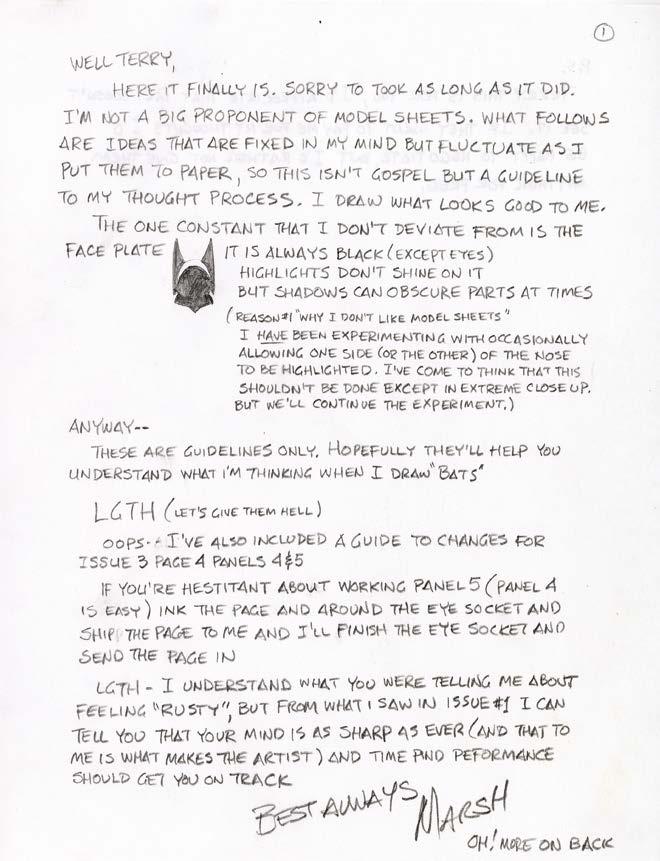
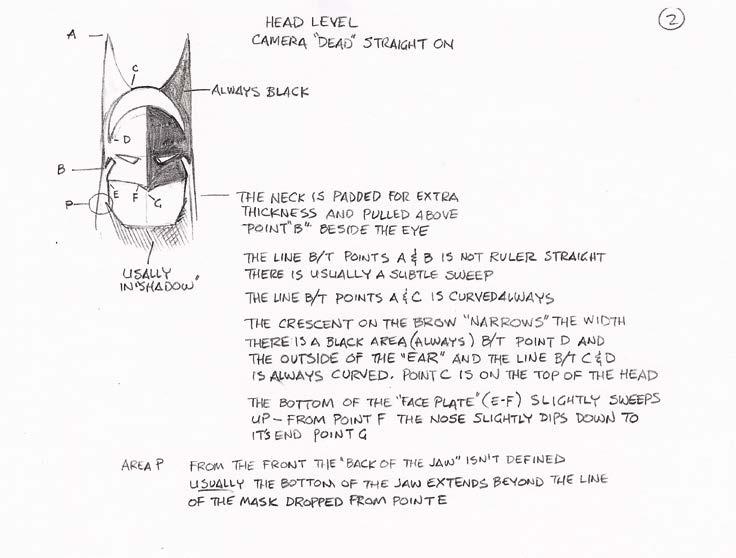
Notes from Rogers to Austin on his vision of the Batman’s cowl. (courtesy of Terry Austin)
ODDS AND ENDS
(1978 from DC Profiles #26, which appeared in Batman #295, Superman #319, and Superman Family #187)
Of all DC’S rapidly rising new stars, Marshall Rogers’ ascent has been swiftest of all. In less than a year, Marshall has gone from back feature artist to firststringer on Detective Comics and Mr. Miracle. Marshall almost didn’t make it to comics. His studies in art school concentrated on architecture, but after two years of studying designing parking lots and shopping centers, Marshall decided “the world wasn’t ready for another Frank Lloyd Wright” and left school seeking fame and fortune in the comic field.
Unfortunately, the comics world was not yet ready for Marshall Rogers. For the next two years, he worked in a hardware store while doing occasional illustrations for mass circulation magazines and sharpening his artistic skills.
Apparently, those two years did the trick. Marshall broke into comics, landing a stint penciling for Marvel’s British weeklies. Not long after, Marshall showed up at DC Comics, portfolio in hand, and was given his first assignment: a two part “Tales of the Great Disaster” story for Weird War Tales.
That was followed by some mystery stories, a Tales of Krypton piece and a four-part feature in Detective Comics featuring a new villain named The Calculator. His work on the latter led Editor Julie Schwartz to hand Marshall a real plum for a newcomer: penciling the book-length Batman versus the Calculator story in Detective Comics.
What came next surprised even Marshall. The powers-thatbe assigned Marshall to Detective as the regular penciler. And he almost immediately picked up the art chores on the newlyrevived Mister Miracle book as well.
“What I try to do,” Marshall told DC Profiles, “is first think of
what’s been done before, and then I discard that and try to approach it from a completely different angle.”
After looking over Marshall Rogers’ work, we’d have to say he’s found a different angle.
AWARDS
• 1978: nominated at the Eagle Awards for Favorite Artist, for Favorite Single Story for Detective Comics #472: “I am the Batman” with Steve Englehart, and for Favorite Continued Story for Detective Comics #471–472 with Steve Englehart
• 1979: Inkpot Award
• 1979: nominated at the Eagle Awards for Favorite Comic Book Artist (US), for Best Continued Story for Detective Comics #475–476 with Steve Englehart, and for Best Cover for Detective Comics #476
DEMON WITH A GLASS HAND
DC introduced a line of graphic novels based on classic science fiction, and teamed up some of their best artists to tackle the task of bringing epic ideas into a 52-page format. Marshall Rogers was given the task of adapting Harlan Ellison’s “Demon With A Glass Hand” story based on an episode of The Outer


CHAPTER 4
Photo by Sam Maronie
THE BATMAN PORTFOLIO

In 1981. S.Q. Productions released The Batman Portfolio #1 by Marshall Rogers. The limited (1,000 copies) full color, fiveplate portfolio was signed by Rogers, and featured an envelope with a black-&-white Batman illustration.


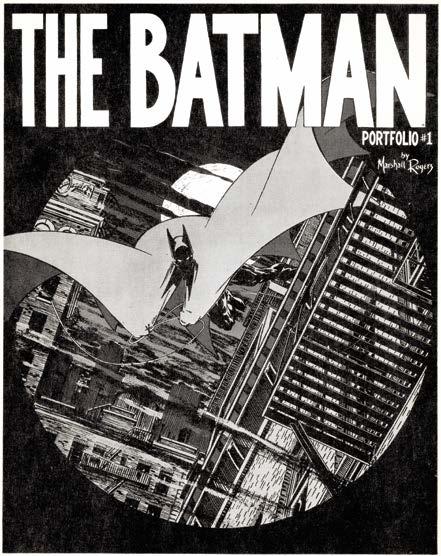
(courtesy Dave Lemieux)
Limits from 1964, written by Ellison specifically for actor Robert Culp. It became one of the definitive episodes of the series, and was named #73 in TV Guide’s 2009 “Top 100 TV Episodes of All Time.” However, Ellison was not a fan of Rogers’ work on his story.
[From a video posted on YouTube by routier1642 of a Convention appearance by Harlan Ellison in Sydney, Australia in 1996.]
MODERATOR: Were you happy with the adaptation?
HARLAN ELLISON: No, I hate it. Well, first of all, Julius Schwartz, one of my oldest friends— he was an editor at DC comics forever and ever and ever and ever; he’s now the editor emeritus—was doing a series of science fiction novel adaptations. And I gave him my original shooting script of my Outer Limits segment, “Demon With The Glass Hand”… it had additional material in it, additional scenes, it was much larger, and Julie asked me what artist I wanted to use. And I said Marshall Rogers, because Marshall Rogers had, shortly before that time, done a brilliant, brilliant series of Batman comics. They had been absolutely extraordinary in terms of design, in terms of use of color, in terms of just interior dynamics from panel to panel, and I thought he would be perfect for it. And so he was hired to do it. Now I’ve gotten conflicting stories about why it is not—I don’t think its particularly good, and I’ll tell you why… I heard he was not paid as much as he wanted, so he didn’t do as good a job.
Now, I find that a really—it’s a horrible reason for not doing your art. If you take a job, even if they pay you in pennies, if you accept the gig, dammit, you do your best work. Doesn’t matter how much you’re being—if you’re not happy with the payment, don’t take the job. Nobody’s breaking your arm to take the job, but if you do it, you don’t say, ‘Well I wasn’t paid a dollar, I was only paid a dime—so I’m only going to do it real fast.’ That is indefensible, and I lose all respect for the artist. And that’s apparently what happened with Marshall.
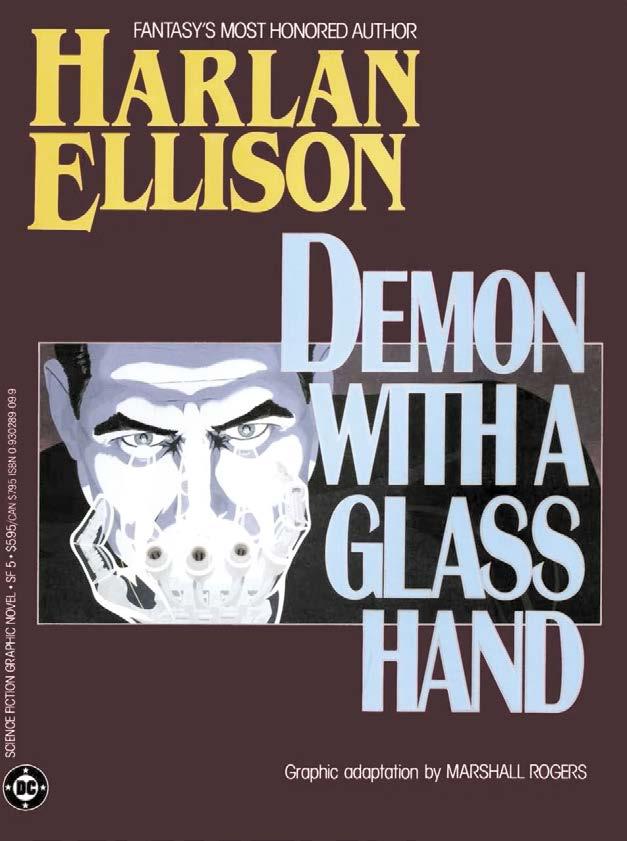
shots. When I do a script, I tell you everything that’s in the shot. I even pick out the music which I want to be played, which really annoys the crap out of directors. But then that’s my mission in life, to annoy the crap out of directors.
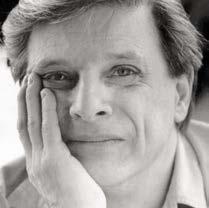
Harlan Ellison
I was not happy at all with… the storytelling itself… and he was working from my script. So all he had to do was draw the scenes as I had described them. I mean, I do a very complete script. I don’t just do master
MARSHALL’S QUOTES FROM THE ’80S
[Bill DeSimone managed to interview Rogers in the late 1980s for a research page, and got some great quotes from Rogers about the comic book industry at that time.]
Chain-smoking Camels, wearing a Cap’n Quick & a Foozle T-shirt under a sport jacket, Marshall Rogers sketched, autographed, and talked comics at a Fred Greenberg Convention on a September Sunday in Manhattan. New projects mentioned by Marshall included a “Shadow” fill-in written by Andy Helfer; a year-long stint on Silver Surfer, written by Steve Englehart; and a DC benefit book
Cover of Rogers’ 1986 graphic novel adaptation of Harlan Ellison’s Demon With A Glass Hand.
CHAPTER 5

ON JACK KIRBY
B. Cooke in March 2002 for The Jack Kirby Collector #35, and transcribed by LongBox.com Staff
JON B. COOKE: How far back do you recall Kirby’s work?
MARSHALL ROGERS: I grew up with Kirby’s work. He’s probably the reason I wanted to get into comic books.
JON: What work specifically?
MARSHALL: Everything, but it wasn’t until he started working with Marvel that I knew what the man’s name was. Then, once I realized who the guy was drawing that work, I realized I had probably first read him when he had done either the Shield or the Fly. I don’t remember exactly which of the two, but Jack’s work was so distinctive that even as a young kid, I recognized it: “Hey, this is the same guy that did the Fly.” I went back and I checked it out and looked at the art and realized, “Yeah, this was the same guy.”
JON: What was it about Jack’s work that was compelling?
MARSHALL: The dynamics, I guess, would be the best way to say it. Jack brought the work to life for me. It made it seem more than two-dimensional to me. One thing that I remember noticing was when some villain would uproot a building from a New York City block, the pipes and the guts of the building underneath were dangling down, as compared to Superman; when he lifted a building up, it had this nice clean flat
surface, you know—as if it was a toy placed on a chess board or something—but there was always rubble and junk coming out of Jack’s buildings whenever they were lifted up.

JON: Were you into his Atlas monster work? Did you look at those—like Tales of Suspense, Strange Tales, you know—the pre-Marvel hero stuff?
MARSHALL: A little bit, but I don’t honestly remember seeing it straight off the shelves. I was collecting comic books as a youngster, but I didn’t get right in on the very beginning of Marvel. I ended up running around the neighborhood trading to get back issues, so I don’t remember exactly if I started out with some of the monster books and had seen them, or had picked them up during trades, etc.
JON: Have you looked at the monster stuff since? Did you find anything of interest in there to this day?
MARSHALL: I guess, really, the monster genre was not my favorite genre, but I looked at everything and anything that Jack did at one point, that I could lay my hands on.
JON: You were born in 1950—so, generally speaking, you started picking them up around ’62? Were you about 11 or 12 years old?
MARSHALL: No, I was reading comic books earlier than that.
JON: I meant the Marvel stuff specifically. You said you didn’t get in on the ground floor necessarily.
Marshall Rogers Interview conducted by Jon
Jack Kirby
MARSHALL: I just missed it because a friend of mine had Amazing Fantasy #15 that Spider-Man first appeared in. Then I ended up buying the second issue of Spider-Man, but it wasn’t like I was hitting the newsstand every week to get them, so it was hit-and-miss in the beginning.
JON: Did you find Fantastic Four compelling the minute you encountered it?
MARSHALL: Yeah, and actually X-Men was one of my favorite titles. That was the one I really glommed onto because I always felt I had large feet and I really related to the Beast. (laughter) I wanted to be able to walk up the sides of a building. That was one of the things about Jack’s work, particularly in the beginning, that I think was the most attractive to me. The situations were more down-to-earth. They weren’t as fantastic as the DC stuff. It was Jack creating characters that would walk up the side of a building or shrink to the size of an ant. It was more basic fantasy elements rather than the fantastical type of elements. The Fantastic Four was certainly a departure from that, but his other stuff was even more compelling to me, and Thor would not necessarily be included in that. I think the work of his I found most compelling were the simple fantasy elements, like shrinking down to a real small size or being able to swing around a building as if you were on a jungle vine.
JON: Did you also clue into Stan Lee’s contributions to it?
MARSHALL: In the beginning I was attracted to the artwork. I realized Stan’s name from the signatures. When I got a comic book, I would basically flip though the pages just to see the artwork and then go back and read the story later on. Particularly with Jack’s work, you could tell what the story was without having to read the captions.
JON: The X-Men was a title on which he later did quite loose breakdowns. Could you still see the Kirby through the guys who inked and finished the penciled stuff?
MARSHALL: I could, and I was able to quickly tell as soon as Jack stopped contributing to it as a ghost, because the layout and dynamics just took a vast turn, and became very different.
JON: Prior to Marvel, did you collect comics? Did you save them or were you a reader?
MARSHALL: I was a reader.
JON: And once you got bit by the Marvel bug, did you continue to read DC comics or did you pass them by?
MARSHALL: I always went back to Batman, hoping to see that “something” that I’d always wanted to see, but—.
JON: You didn’t see it.
MARSHALL: No, I never did, you’re right.
JON: So did you remain with Marvel pretty much throughout your teen years?
MARSHALL: Well, I don’t know; about 15 or 16 I started getting interested in girls and losing interest in comics. Then once I got into college, I started to take up the interest again. It coincided with a serious interest in getting into the business.
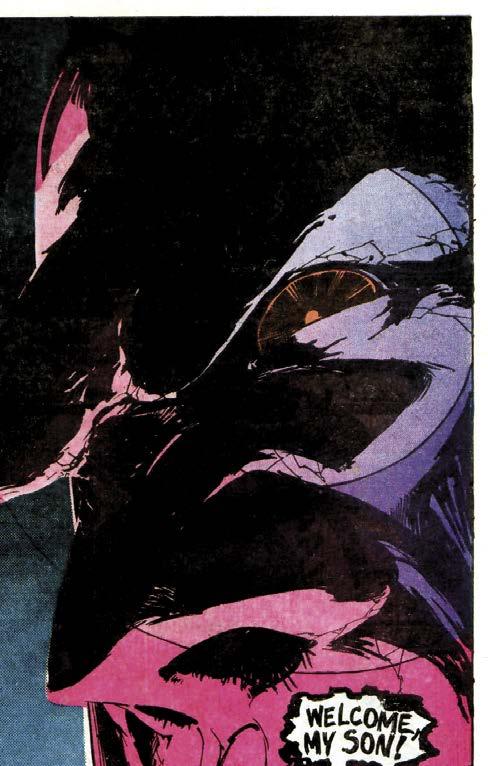
JON: Were you losing interest in the comics just as Jack was getting into the Galactus trilogy, for instance, and when the cosmic comics came on, with the introduction of the Silver Surfer?
MARSHALL: The introduction of the Silver Surfer was a little bit earlier. I was still reading Fantastic Four on a regular basis when the Silver Surfer first appeared. I’m sure I was collecting because if I read it, I was putting it into my pile.
JON: Did you spark to the Surfer? Did you think he was cool?
MARSHALL: It was another interesting character, but a little too much like Superman. I prefer characters that have got fallibilities. I’m not a big Superman fan because at this point he can basically do anything, so where is the conflict in the storyline? It was really very much the same with Silver Surfer, even
A full-page of Darkseid from Mister Miracle #22. At the 1978 Atlanta Fantasy Fair (attended by TwoMorrows publisher John Morrow), Marshall commented that he hung the original art for this page by his front door to scare away salesmen.
(previous page) Rogers pencils and Terry Austin inks on a page from Detective Comics #468, featuring Bruce Wayne’s encounter with an old Kirby character, Morgan Edge.

PUBLISHER: Marvel Comics
TIME PERIOD: 1987–1988
BOOK/COMIC TITLE and ISSUE NUMBER(s):
Avengers Annual #16
Marvel Age Annual #3 - Ad
Silver Surfer #s 1–12, 21
Silver Surfer print
FORMAT: Comic book
OVERVIEW: Marshall Rogers was not the first artist to draw the Silver Surfer. That distinction belongs to Jack Kirby, who penciled his debut in Fantastic Four #48. Reader response to the character was positive and after multiple guest appearances, the Surfer received his own title in 1968. But in spite of exceptional artwork by John Buscema, the book only lasted 18 issues, the last drawn by Kirby. What followed was another series of guest appearances in various titles, a 1978 solo graphic novel illustrated by Kirby and published by Fireside, and a one-shot drawn by John Byrne. Then in 1987, Marvel launched a new Silver Surfer title, the first not written by Stan Lee. It featured writer Steve Englehart and frequent collaborator, artist Marshall Rogers. The series was noteworthy in that the initial story broke with long-held tradition and, with the help of the Fantastic Four, enabled the Surfer to break through the barrier of Galactus and leave earth.
KEY CHARACTERS:
Galactus – devourer of worlds and his herald Nova.
Shalla-Bal – former love of Silver Surfer and Empress of Zenn-La. Mantis – Avenger and companion of the Silver Surfer in the battle against the Elders of the Universe.
SETTING(s): Earth, Zenn-La, and various locations throughout space.
SYNOPSIS of KEY ISSUES:
Silver Surfer #1 – The Fantastic Four help the Silver Surfer escape his confinement on earth and the Surfer rescues Nova from the Skrulls.
Silver Surfer #2 – The Surfer returns to his home world to find that his former love Shalla-Bal is now Empress and Zenn-La is being drawn into a new Kree-Skrull war.
Silver Surfer #3 – Origin of Mantis told.
Silver Surfer #7 – Mantis discovers that the Elders are plotting to kill Galactus with the soul gems.
Silver Surfer #9 – The Surfer comes to the aid of Galactus when the Elders try to kill him.
Silver Surfer #10 – Galactus meets Eternity.
Avengers Annual #16 – Korvac removes the protective silver coating from the Surfer.
BEST ISSUE: This is debatable as several are noteworthy, but the nod goes to Silver Surfer #1, watching Norrin Radd escape the confines of earth that have held him for so long.
MARSHALL ROGERS’ CONTRIBUTION: Rogers not only penciled
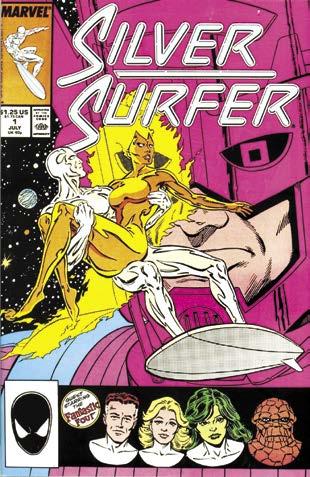
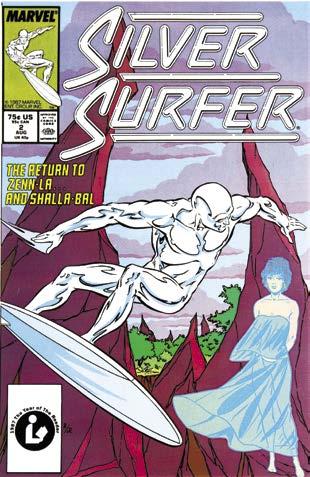

STEVE ENGLEHART
Steve Englehart Interview
Conducted 2020 by
Dewey Cassell
Transcribed by Steven
Tice
Additional Interview by Jeff Messer in December 2023
DEWEY CASSELL: There came a time when you ended up leaving Marvel and went to DC. I thought that might be a good place to start.

Steve Englehart
STEVE ENGLEHART: Yeah, although I did not meet Marshall until a year after that, and I didn’t see Marshall’s stuff. I mean, I went to DC, I wrote Justice League and Batman, and then I left the country, and so did not meet the artist who was going to do the Batman stuff, and did not even see it until all of it was published when Julie Schwartz sent me a package over in Spain. So I can start wherever you want to start, but, in terms of Marshall, I was unaware—I mean, the first time I was aware of Marshall was when I saw the printed material, and I didn’t meet him until I got back to America, so make of that what you will.
CASSELL: Okay. So when you went to DC, one of the things you particularly wanted to do was to write Batman. Did you already have the story in mind that you wanted to do?
ENGLEHART: No, not at all. I mean, the way I tend to work is, being a freelancer, I don’t make up stories until somebody’s paying me for them, so, when Jenette Kahn called me up and asked me to come over to DC, I had already made plans to go to Europe six months, whatever, down the line. So I said to her, “I can only give you less than a year before I leave town.” So she knew that going in, and she wanted me to do Justice League. She wanted me to do for the Justice League what I had done for the Avengers, which is how she put it. Give them characters, and give them stories, and all stuff that the Justice League didn’t really have at that point in time. And I said, “Yeah, okay, that would
be fine. But I also want to do Batman because I’ve always loved Batman, and this is my one opportunity,” I thought, “to do Batman, so I want to do that.” And she said, okay, she could go with that. So it was at that point that I started thinking about the Justice League and Batman, and I think that was all I was thinking about at the beginning. Later on we did Mister Miracle, of course. So I sat down and started figuring out what I wanted to do. We can forget about the Justice League for this discussion, but for both of them I was figuring out what I wanted to do, and I sort of gradually built up what I thought was important to do in Batman, which is basically I wanted to do two things. One, I wanted to get back the pulp darkness from the original concept of the thing. If you’ve ever seen Batman stories from the first year of Detective Comics, the art is very dark, and he’s fighting vampires, and Hugo Strange with monsters, and all this sort of thing, and the early days of the Joker. I wanted to get that darkness and that pulp feeling back, because he was a modern day DC superhero like a lot of them were, and I thought, “No, Batman needs atmosphere.” And the other thing was make Batman an adult. I had always thought it just made no sense to me, even as a kid, that when Lois Lane or Lana Lang would saunter up to a superhero that the superhero would go, “No, I’m sort of above all of that,” and I thought, “I don’t think that’s how adults actually operate.”
So Silver St. Cloud, I wanted a strong woman who could stand up to a strong character like Batman, Bruce Wayne. I wanted to know more about Bruce Wayne, that’s what that was sort of opening up. I wanted to know who the guy was inside of him. So I had those concepts. I went back and looked at the old stuff, found Hugo Strange and just sort of started putting stuff together. So we started out, of course, with Walt Simonson doing the art, and he was very enthusiastic

CHAPTER 6
about it, and Walt is Walt, and it was like, “Oh, that’ll be good.” Because there weren’t a lot of superstars left working at DC. Neal Adams had gone over to Marvel, Gil Kane had gone over to Marvel, Bob Brown had gone over to Marvel. So there wasn’t a deep bench of artists, and I was lucky at Justice League that I had Dick Dillin, because Dick Dillin wasn’t a superstar, but he was Dick Dillin, who had drawn the Justice League for a long time, and I thought it was cool to be doing that book with him. But on Batman, there was no telling who was going to do it. And then they said, “Oh, Walt’s going to do it.” He’s going to do layouts, and Al Milgrom was going to do finishes. So I started off doing the book Marvel style, which is where I would come up with a plot, and then give the plot to the artist, who would then be able to draw that plot as best suited him. It was an approach that I prefer, because I like to let artists—I wanted to be an artist when I got started. I like art. I don’t want to be telling an artist how to draw stuff, necessarily, so I want him to tell the story and let him draw it the way he wants to. The problem, as it turned out, was I only had a limited amount of time, so giving a plot to Walt, waiting for him to draw it—I mean, he wasn’t delaying it, he was doing what he was supposed to do, but I realized that I was not going to be able to do the entire series that way because I just would run out of time.
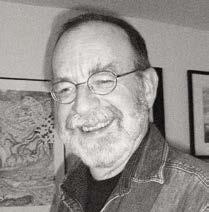
here, and you take who you get.” That’s the way it worked. Pretty much everybody I ever worked with back in those days was assigned to the same book. I just rolled with whoever was there. In any event, I started writing the scripts in advance, and I knew how many I could do, which was seven, total, based on the publishing schedule as it existed, before I would run out of time. And so I started at that point to really think about, “Okay, what are these last five scripts, how am I going to accomplish what I want to accomplish in these last five scripts?”
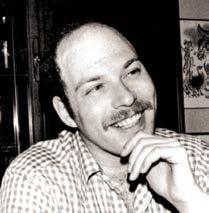
Midway through that, Julie Schwartz, the editor, said that the first couple of issues had sold so well that they were going to add an extra issue that summer, so all of a sudden I had eight, and that turned out to be good, because I had the same storyline, but I could let some scenes breathe a little bit more. I could open things up and add a few extra things here and there and make the whole thing just a little smoother. I mean, hopefully what I was going to do was smooth enough, but I could elaborate on things and let things go a little further.
So I needed to do the scripts in advance, which is the other approach to writing comics, where you’re doing, “Panel One: Batman says this, Silver says this. Two, blah, blah, blah.” And so, somewhere in there, and I can’t say that the two things were simultaneous, but when I said I can’t wait for Walt anymore and I’ll just go ahead and write the scripts, I’ve never known exactly why we switched artists at that point. I mean, Walt could have taken those scripts and drawn them. I think it was Julie Schwartz who decided that he wasn’t completely satisfied with what was going on. Back in those days, that was editorial’s decision. I mean, you didn’t go to an editor as a writer and say, “Oh, I don’t like this artist. Get a different artist.” It’s like, “No, dude. We’re running a machine
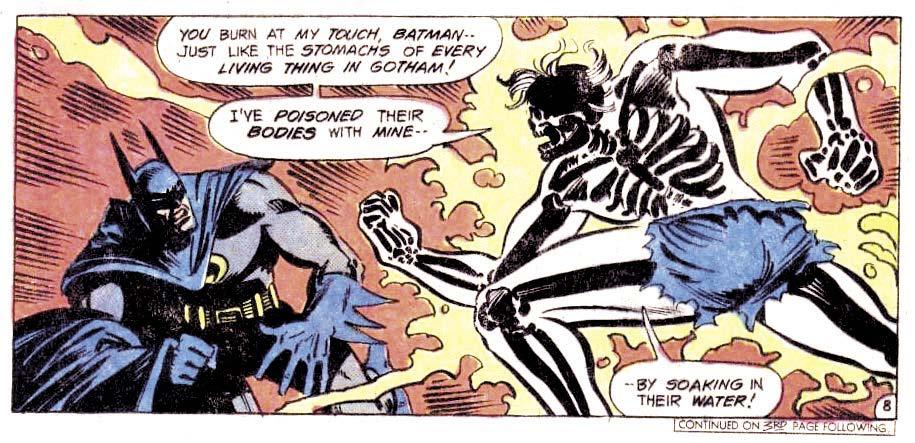
In any event, I wrote all the scripts, six more scripts, handed them all in, left the country. I had no idea who was going to draw them. I figured the odds were it was going to be a couple of journeymen. If they didn’t want Walt, there wasn’t much of a bench where they could go find somebody else that good. So I figured, my basic thought at that point was I am writing these scripts to be as good as they can possibly be on my end. I loved the Batman, I want to do that anyway, but I’m figuring that the art’s going to drag down the overall finished product, and I had learned over the years that most people can’t differentiate and go, “Wow, the story was really good, but the art sucked,” or whatever. They just go, “Oh, I didn’t like that book,” or whatever. So that’s all I knew. Then I went to Europe, and six months later I got a package in the mail, and it had all the issues in it. So I saw Marshall Rogers and Terry Austin’s work for the first time, and I absolutely, truthfully, I looked toward heaven and said, “Thank you, God.” I’m not religious in that sense, but that was the appropriate response to, like, oh, I really wanted this series to be good, and it is. So I was extremely happy about all that. And then, when I finally get back to America the following summer, I met Marshall and Terry for the first time. So that’s how we got there.
CASSELL: So when you opened that package and you’re looking at the artwork for the first time, what was it about it that pleased you? What is it that you think is appealing about Marshall’s style?
ENGLEHART: He and Terry both really loved the Batman as much as I did. And I’ve seen this over the years with a number of new artists. You can see that they’re good enough to get
Walter Simonson
Al Milgrom
Panel from Detective Comics # 469 illustrated by Walter Simonson and Al Milgrom.
the job with the first issue, and then you could see they got better with the second issue, and then they got better with the third issue, because they’re really trying to take it as far as they can, and they’re getting more experience drawing, and all that different stuff. I mean, it just felt like Batman… Marshall understood the character. He understood Gotham City, which, again, I had thought about making Gotham City a big part of it. I mean, it was in the scripts, but I hadn’t said, “Oh, I’m going to specialize in Gotham City here.” But Marshall had studied architecture. He liked buildings. He didn’t mind drawing a very gritty Gotham City. And his characters were amazing. His Joker, his Penguin, Silver St. Cloud got a whole lot prettier when Marshall drew her. So there was nothing to criticize. Which, I don’t know who you’ve talked to, but Marshall and Terry, when we did the second run in 2004/2005, they told me—and I heard for the first time, that DC, their art director Joe Orlando, hated their artwork. Do you know this story?
CASSELL: No!
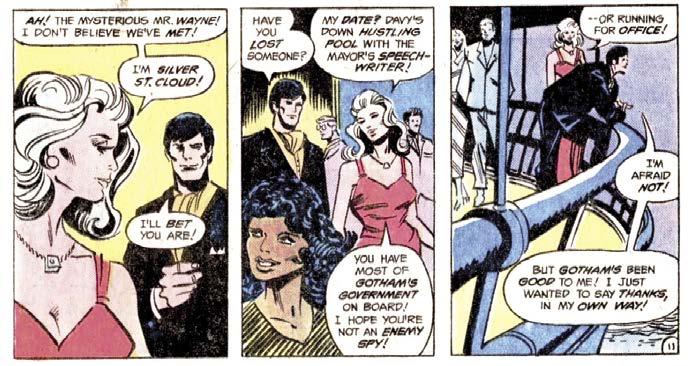
ENGLEHART: Every month they would get called into the office, and Joe Orlando would go on in detail and at length about how terrible this art was. It did not look like DC artwork. “You’re going to have to change it.” Terry says he once sat outside Orlando’s office for a half an hour hearing Orlando yelling at Marshall, and then Marshall came out white-faced and kind of shaken, according to Terry. I was astounded to hear this, thirty years after the fact. But DC’s the company that redrew Jack Kirby when they hired him. They are a corporation, and they have a corporate mentality. They didn’t think of, like, “Here’s an exciting new art direction.” They thought it ought to look like it was drawn by half a dozen other guys who work up here. And so that’s the first half. And then the other half is kudos to Marshall and Terry for not doing it, for not changing what they were doing. But apparently DC just really didn’t like it. Once it started appearing, it started selling like crazy, and then they said, “Oh, well, cool! We like this. Hey, why don’t you guys do Mister Miracle, too?” And Madame Xanadu we did, and other stuff once they decided that Englehart and Rogers was a saleable concept. So that’s probably all I know about the art. I don’t know if you’ve tried to talk to Terry… he’s the only one, obviously, who could tell you anything more about what working conditions were in that situation.
CASSELL: I want to talk a little bit more about the first series of stories. For example, about Silver St. Cloud, you mentioned that you wanted to have a more adult Batman, if you will, that was in a relationship. Did you base Silver St. Cloud on any particular person?
ENGLEHART: No. I could see who this woman would have to be. Good-looking, of course. Strong, a strong person, a strong woman. She needed to be a business-
woman, somebody who could move in Bruce Wayne’s Gotham City circles, etc. And the name Silver St. Cloud just comes from—I was trying to think of a Batman sort of name, and I could see silver clouds in front of the moon at midnight, that atmosphere that I was looking for. So that’s where the name Silver St. Cloud came from. But, no, I never base things on people. I mean, I probably have here and there, but in general, I don’t say, “Oh, I think I really like Scarlet Johansson, so I will do a Scarlet Johansson character.” No, Silver St. Cloud is her own person. I wanted her to be the girlfriend for Bruce Wayne. I knew I wasn’t going to continue on the series or anything, but that was the contribution that I wanted—because Batman, to me, I mentioned I wanted to know more about Bruce Wayne. Everybody else in superhero world gets their powers because they came from another planet, or they got bitten by a radioactive spider, or whatever. But Batman is a person who taught himself to be this good, so I wanted to know more about the person. I thought that was far more important than knowing about Clark Kent, for example. Clark Kent’s not a real person. Barry Allen, 83 Flashes in the past, he’s a real person, but we didn’t care so much about Barry Allen. We cared about the Flash. But I really thought Bruce Wayne was somebody that we needed to know. Silver St. Cloud, as I say, was a way of getting at that person who saw his parents murdered, and swore that he was going to do something about it, and taught himself to be able to do something about it, and so forth. That’s my rant on Silver St. Cloud.
CASSELL: I liked that you sort of gave him a reason to want to be Bruce Wayne. Because, otherwise, the Batman part’s a whole lot more interesting in some respects, right? It’s exciting, and it’s adventuresome. But you gave him a compelling reason to want to be the Bruce Wayne that Silver would want to be with.
ENGLEHART: Yeah, well, I like writing characters. I mean, the reason I write is to get inside all these different people’s heads. So it may be that Batman vs. the Joker in a lightning storm is more exciting than Bruce Wayne and Silver sitting in a restaurant having a conversation, but I
Bruce Wayne meets Silver St. Cloud in this panel from Detective Comics #470 by Simonson and Milgrom, 1977.

Batman takes on a maniacal Joker in this commission by Rogers. (courtesy of Albert Moy)
You can download all six scripts for the unproduced Dark Detective III at Steve Englehart’s website: www.steveenglehart.com
had just as good a time writing both of them. I mean, the way people took to Silver and so forth, she held up her end in the parts where she had to. If I had been continuing to write the thing—and I sort of have over thirty-year periods, because I don’t work things out that far in advance—I still don’t know whether that relationship would be able to survive the rigors of his being Batman. I didn’t have a problem bringing her back when I did the second one. That made sense to me. The third one, which was unpublished but can be downloaded off my website, they’re broken up. What does that mean to Bruce Wayne, to have this girlfriend that he can’t be with? So as I have done that run of Batman, the Marshall Rogers Batman stories, the relationship
between Bruce and Silver has progressed, has moved along. But I still couldn’t tell you whether they would end up living happily together in Wayne Mansion or whether it’d just be impossible to make that work. That’s what I like about writing stories is you find that stuff out, but we never got to the end, so we never found out.
CASSELL: Well, I think that evolution, if you will, is part of what makes it believable as well, because real-life relationships don’t stand still, so I liked the fact that it evolved. Like, in the second one, the Dark Detective, or what you refer to as Dark Detective II, the nature of their relationship changed via circumstances. It was something outside their control. I thought you handled that really well. The second thing I wanted to ask you about was, where did you come up with the idea for the Joker to want to patent these laughing fish?
ENGLEHART: Well, I wanted—I mean, back in the day, the Joker was a homicidal maniac, and as I recently figured out for the first time, that’s when I was doing an intro for their Greatest Joker Stories new book that’s coming out at some point. I don’t know what their publishing plans are now, but they were putting together eighty years of the Joker and they wanted me to write a thing about the history of the Joker, and I had always known that, in those early stories, every Joker story would end with the Joker dying or being caught and thrown in jail, and the next Joker story would begin with him having escaped death, although people didn’t know it, or breaking out of jail. So it was like they did continuity with the Joker until there were so many Batman stories being published in Batman, and Detective, and World’s Finest, and all the rest of this that they couldn’t keep it up. But I thought that was pretty cool. And what I realized was that made him not only a homicidal maniac, but it made him a serial killer, because he kept coming back. So the first serial killer in comics, probably. But he was supposed to be crazy. He was supposed to be a maniac. And we, from 1942 until 1976, he had been the clown at the Ha-Ha Hacienda, and he did funny things, and not even that. One of the best stories in the Fifties was him and Luthor teaming up to build robots, so it’s like, all of the atmosphere had been taken out of this guy. And, in fact, just before ’76, they had made a Joker series in which he was sort of like a bad guy, except he wasn’t really a bad guy because everybody else was a worse guy. It was just terrible. So I wanted to bring back the dark, scary Joker who was insane.
So then I thought, “Well, all right. I can’t just say, ‘Oh, yeah, he’s insane.’” I should think of something that an insane person would do, and, again, I’m a writer. Hopefully I’m not insane, but I have the desire to put myself inside the head of an insane person. And it was kind of like Silver St. Cloud or any of the rest of this. I figured out I want to do something in this ballpark, and laughing fish just sort of appeared. I mean, I didn’t see a fish and go, “Oh, I have an idea,” or whatever. It was like, that just sounded weird: laughing fish, it sounded like a weird thing to say. So I wanted the Joker to have a plot where you as the reader could go, “That’s nuts. That’s crazy.” But you could see how he could believe it, you know? He could talk himself into this kind of thing. And so that was kind of what that was about—laughing fish just sounded nuts, but the idea of copyrighting them, and going to the office and wanting to fill out forms and stuff—I mean, hopefully readers would go, “Gee, that’s really, he’s insane.” So that was what I was trying to accomplish there. But there’s no rosebud when it comes to the laughing fish. It just sounds cool, just like Silver St. Cloud sounds cool. I just sort of go on gut reaction, and does that do what I need it to do? I mean, at some point there’s me back here in the background sort of manipulating everything, but you’re not supposed to feel that or see that, right? A lot of it is like, “I’d like to go over here and do this. What’s the most comic bookly effective way to do that?” So that’s how we got there.
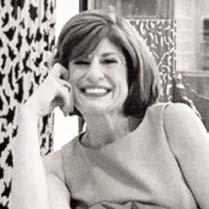
CASSELL: It worked very well. And I liked the way, too, that you worked into the stories—not just the Joker one, but the whole series that you wrote— these little Easter eggs for people, like naming characters after past Batman artists and writers, such as Giordano, Giella, Novick, and Friedrich. There were nice little touches along the way, too, for people that had been reading Batman for more than a couple of years.

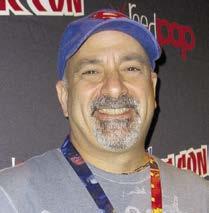
CASSELL: Well, I thought it was great. It provided a little bit of humor, as it were; dark humor, mind you, but worked in there as well with this insane guy. As you said, he believed it, but at the same time it was kind of sickly humorous. I don’t know, I thought it was great. I thought it was a really clever way of presenting the Joker that was both humorous and enjoyable, and at the same time sort of scary and frightening.
ENGLEHART: Over the last 40 years, I’ve been asked to write about the Joker a lot. I hadn’t thought of this all the way through at the time, but I have had to think about the Joker a lot over the last 40 years. The Joker’s the kind of guy who says, “I want to rob a bank. But I’m not going to go in there with a couple of guns and a couple of goons and rob the bank. I want to rob a bank with laughing fish and parachuting out of the sky.” And then he makes it work. He figures out a way to do it. He’s not just walking in there tripping and like, “I’ve got some fish, let’s rob—.” No, the Joker’s so scary because he thinks like nobody else, but he does figure out a plot. He does figure out what he’s supposed to do. So all of that was, even just sensing that without putting it into words, but I knew that he needed to have a plot that made sense, you know? And then the rest of it came.
ENGLEHART: Yeah. Well, you know, I’m a big fan of most everybody in comics, especially including the guys who I really liked when I was just reading them and not yet doing them, so I wanted to—and here I was at DC for a year, so it was a chance to sort of tip my hat to DC people in the process.
DARK KNIGHT’S RETURN
CASSELL: So flash-forward 27 years. What afforded the opportunity to get back with Marshall Rogers and Terry Austin and take another stab at it?
ENGLEHART: Well, I should not skip over the 27 years, first. When those Seventies books came out, as I say, they sold like crazy. I mean, it was like a huge—it was everything Jenette Kahn could have wanted from me, to really put DC back on the map, to create new energy over there—and it sparked Michael Uslan to decide that he wanted to do a Batman movie based on those stories. And so, for the next ten years, they tried to make a movie out of those stories, and eventually they came to me and they said, “Nobody’s really been able to get that feel, that ambience that you had. We’ve had Hollywood guys doing it, but we need you to get involved in this movie.” So I went on and became basically a script doctor for that movie. And it was still the era when comic book movies were supposed to be funny. You were supposed to have a funny side to it, because you had to sort of let the audience know that you didn’t really believe in any of this stuff, or that comics were actually a thing, so the movies—Uslan and Tim Burton, who would do that; I mean, they all wanted to move it in a more comedic direction, and I was brought in because it was based on my stories, and so I was trying to emphasize the strengths, as I saw them, in my stories. So that movie, when it finally came out, was kind of a mix of the two concepts. It was more serious than movies had been to that point; it was less serious than they’d become. When that movie came out, it was when I was in the theater that I saw that Silver St. Cloud had had her name changed to Vicki Vale, and Boss Thorne had had his name changed to Boss Grissom. And why was that? So that DC wouldn’t have to pay me any royalties, me and Marshall and the rest of us, any royalties on this thing. And from that point on, from ’89 to 2004, me and Marshall were, like, erased out of the DC pantheon. I mean, they did not want us to do any more Batman because it would upset this. DC again
Jeanette Kahn
Michael Uslan
Dan Didio

Batman battles the Riddler in this Rogers page from the unpublished issue of Batman: Dark Detective II. Inks by Jouko Ruokosenmaki. (courtesy of Jouko Ruokosemaki)
being corporate, they like to go on the idea that everything just sprang from DC Comics, and didn’t like it when people started talking about the “Englehart/Rogers Batman,” or the “Alan Moore Watchmen,” or the Mike Grell (Green Arrow)… They wanted it all to look the same, and be the same, and just come from DC Comics. So, for two decades, we didn’t get to do Batman. I did a couple of Batmans here and there with other people, Marshall had the newspaper strip for a while, but for twenty years, basically, or 15 years, whatever it was, we went from having our stuff reprinted to having nothing reprinted. And when they finally did reprint it, they put it under the name “Strange Apparitions” so that nobody could find it.
I’m not a DC fan. I don’t like DC. They asked
me to do something, and I did it, and had a good time doing it, but the treatment that we all got from it has turned me off. And I will just say one more thing in there, in that I wrote lots and lots of characters. If I couldn’t do Batman, I could still do Silver Surfer, or Green Lantern, or… I would have liked to have done more Batman, but it wasn’t, like, looming hugely for me. But for Marshall it was, because he had gotten famous doing the Batman, and he really liked doing the Batman, and then he didn’t get to do any Batman, you know? I think he did a story or two here or there, but in general, he was precluded from the thing that put him on the map. So, with all that said, when the Christopher Nolan movies started to come out, Marshall and I were at WonderCon in San Francisco, and Dan Didio, newly appointed guy in charge, came up to us and said he was a big fan of ours, and now that he was in charge, he really wanted us to do more Batman. And so would we like to do another run of Batman? And we said, “Yeah, hell, yeah, we certainly would! Thank you, Dan! What a nice guy!” So we did. And it sold like crazy. And DC couldn’t quite pull the trigger on a third run. And we’re like, “Come on! We’re here now!” And they’re like, “Well, I don’t know if we really need to do this, and we’ll get to it eventually.” And then finally they gave us the go-ahead for the third run, and I wrote all the scripts, and Marshall penciled the first issue and died. An editor at DC called up Terry Austin and said, “There are people that—.” And I checked this with Terry, like, about six months ago to make sure I was getting the story right, but according to Terry, the editor said, “There are people dancing in the aisles up here that Marshall’s dead because now we don’t have to publish that third run.”
CASSELL: You’re kidding!
ENGLEHART: They were—and I had heard this over the years, in that intro part, that there were two schools of thought up at DC. There was one school of thought that, “Well, what did they do, anyway?” They just went back and got stuff from the Forties, and it was like, “Yeah, they’re not so great.” And the other group was like, “Oh, that was really good stuff,” but that was the minority there. So it didn’t surprise me to hear that there were people who were against our doing any more Batman. The idea of people dancing in the aisles, that’s Terry’s quote. So all I can say is there it is.
Then I went out and I saw the Christopher Nolan movies, and with each Christopher
asked you to do, but there’s still a little time here. Can you knock out some Mister Miracle scripts? Can you do a Madame Xanadu script?” And then they put Marshall on all of those things. So, I mean, it was right at the end. I remember the last Mister Miracle that I did, I wrote an entire script overnight because I was leaving the country the next day, and that was just kind of funny because when I didn’t feel that the stuff I was turning in was up to my standards, I would put a pseudonym on it. Since I wrote that script overnight, I then credited it to John Harkness, which was my usual pseudonym. But a lot of people over the years have said they really liked that issue, so it came off better than I thought it was going to, probably because Marshall was drawing it. In any event—.
CASSELL: You obviously enjoyed writing the Batman stories. Did you enjoy writing the Mister Miracle stories?
ENGLEHART: Not as much. I was not—well, when Kirby went to DC and announced the Fourth World, I thought, “Wow, this is going to be great.” And then the first issue had Kirby’s faces redrawn. Right away I’m like, “What the hell? What’s this all about?” But then it turned out that Kirby couldn’t write. He could think up really cool concepts, and he could draw, but he couldn’t write. He had just a complete tin ear for dialogue, which explains why he always worked with a writer up to that point. But he had decided he wanted the money for writing, too. He was tired of having other people get credit for things that he had thought up, and I’m a big fan of Stan’s and Jack’s, so I don’t mean that in any—but that was Kirby’s opinion that he should write it, because then it would all be his. And it turned out he couldn’t write, so I got pretty tired of the Fourth World pretty quick. My favorite of all the characters was Mister Miracle, but he was supposed to be an escape artist, but he never really escaped. I mean, he would do something and he would get away from it, but it wasn’t very hard for him to do it. So they said Mister Miracle, and I said, “Okay, sure.” We were still pals at that point, and you want me to do that, again, everything’s assigned. “We’d like you to do Mister Miracle.” “All right, fine, I’ll do Mister Miracle.” So I set out to try to give him a better-written personality. I mean, I started out trying to draw but I never pursued it, so if you put me and Jack Kirby together and asked us to draw Mister Miracle, I would lose. But if you’re going to put us together and ask us to write Mister Miracle, I would win. So I tried to write a better version of this character, and I remember the thing I wanted to do there was to make sure the escapes had more intricacy to them. But I was dealing with a bunch of characters, none of whom was particularly well-defined. I was having to sort of define them myself, but I knew I wasn’t going to keep doing this book forever and ever, so I didn’t want to, like, take them

into realms that would be too foreign for what Kirby had in mind, or realms that the next guy writing the series would maybe not want to do because he didn’t see it the same way I did. So I sort of sharpened a lot of those characters, but I couldn’t, like, throw in a new girlfriend and start a relationship, or come up with some villain. I was working in a more constrained environment, storywise. But that was the deal. Writing involves sitting by yourself in a room, so I had long since learned I had better be entertaining myself. It’s entirely possible that I could be entirely bored and I could still write an exciting story because that’s just craft, but it would be a whole lot better if I was excited, from my standpoint. So I got as far into Mister Miracle as I could go, and did as much as I could with it. But I can’t say that it was on the same level of creativity as Batman. Or the Justice League, for that matter. I was supposed to change the Justice League. I wasn’t really supposed to change Mister Miracle.
CASSELL: Right. And I guess, in the same way that you didn’t necessarily know who was going to be drawing the Batman that you were writing, you probably didn’t know who was going to be drawing Mister Miracle either, right?
The Marshall Rogers splash page from another collaboration with Steve Englehart on Mister Miracle # 19, 1977.
INSIDE THE BATMAN
An issue-by-issue exploration of Englehart and Rogers’ seminal Detective Comics run
By Dan Greenfield 13thDimension.com (June 20, 2020)
Steve Englehart and Marshall Rogers’ landmark run on Detective Comics in the late ’70s is, simply put, the greatest Batman story ever told.
I love Batman: Year One. I love The Dark Knight Returns. I love the original Ra’s al Ghul saga. I love “The Joker’s FiveWay Revenge!” (in Batman #251).
Each is a masterpiece and each has an enormous and profound legacy.
But the Englehart-Rogers run— called variously Shadow of the Batman, Strange Apparitions and, by the creators, the original Dark Detective—is the only Batman story that gives you everything you want.
It’s not an origin story. It’s not a final story. It’s not a globe hopping adventure that takes Batman out of his natural environs. And it offers much more than even a spectacular single issue could provide.
STEVE ENGLEHART INTERVIEWS. Englehart and I will discuss all eight chapters of the story in detail. His comments, culled from three hours of discussion over two nights, are thought-provoking, revealing and greatly entertaining.
We’re kicking things off with a prelude that revisits how the entire project came about. Now, let’s light up the Batsignal.
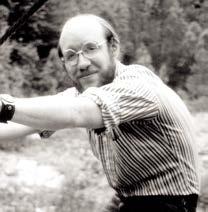
A PRELUDE TO INSIDE THE BATMAN
[In this Prelude, Englehart details how he landed the gig, what he set out to accomplish, what his overarching thoughts are on Batman and the Joker, the change in art teams, how he structured the story and more.
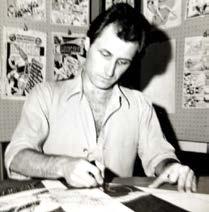
It’s Batman at the height of his powers, in Gotham, with new and familiar allies—Robin, Alfred, Gordon, and Silver St. Cloud—and new and familiar adversaries: the Joker, the Penguin, Hugo Strange, Deadshot, Dr. Phosphorus, and Rupert Thorne.
It, too, is a masterpiece with an enormous and profound legacy.
The complete story has finally been collected for the first time in hardcover and in the way Englehart envisioned it. It’s part of a collection called Tales of the Batman: Steve Englehart and with the book recently released, the time is perfect to go back and look at the story from every conceivable angle.
There have been a million interviews about this run. I’ve talked to Englehart myself about it in the past. So why is this different? Because for the first time, the writer is giving his commentary an issue at a time—in some cases panel by panel.
So welcome to INSIDE THE BATMAN: THE
Dig this, Batfans. You’re in for a treat:]
DAN GREENFIELD: Give us a brief recap of how you got the gig to begin with, and then what Batman research you did ahead of time.
STEVE ENGLEHART: Well, I quit Marvel over an editorial dispute. My wife had traveled in Europe before I knew her. I thought that sounded like a good idea, so we started making plans to go to Europe and then Jenette Kahn called. Jenette had just been appointed publisher over there, Carmine Infantino had been the publisher. Carmine was a decent publisher, I think, but he was maintaining DC’s level of… goodness. They were fine, but they weren’t going anywhere, and a lot of the DC stars—Neal Adams, Gil Kane, Bob Brown—people were leaving to go over to Marvel because they were having more fun at Marvel. So, DC had sort of sunk into—not irrelevance because they still had their DC world going on—but Marvel had outstripped them pretty much. And so, Jenette was brought in. I think she ran a children’s magazine before.
DAN: Dynamite magazine.
STEVE: Right, and so she was asked to fix DC, and her solution was to go hire some of the

CHAPTER 7
Steve Englehart
Marshall Rogers
people at Marvel who would make an impact, in her estimation, at DC. So, she talked to me and she talked to John Buscema. John Buscema did not choose to go to DC.
I was on the outs with Marvel, so I said it would be very cool to write the Justice League and Batman and all the rest of that stuff, but I can only do it for a certain amount of time because I was going to go to Europe. I’d already started the process on that. She offered me the Justice League.
She wanted me to write Justice League because she wanted me to do to the JLA characters what I had done to the Avengers characters, which was give them personalities and have stories and all that stuff that DC didn’t do.
With JLA, I said, “I can’t do what you want in a regular 17 pages a month, I gotta have 34.” She agreed to that, and fortunately that book was being done with Dick Dillin, who was, you know, he could do 34 pages a month if that’s what he was asked to do. And I will say, I was very happy to work with Dick Dillin.
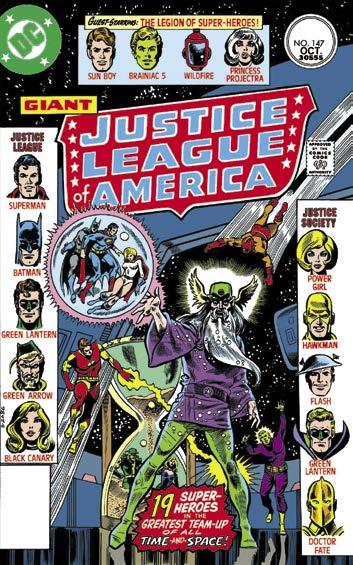
just the Batman that was like everything that I thought Batman should be; my definition at least.
There were several moving factors there. I’m supposed to make him a person. On the person side—and both these things were kind of simultaneous, it wasn’t like I thought of one and then I thought of the other—but on the person side, I had always been annoyed, even as a kid, when Lois Lane or Lana Lang or somebody would cozy up to Superman and Superman would go “Gosh! You know, I really have no idea what to do with an actual woman at this point!” I thought, that’s not how adults operate! I mean, even as a kid I said, “That’s ridiculous.”
I like the guys who came before me and entertained me back in the day. I was told over the last 40 years that nobody cares about Dick Dillin and they weren’t going to republish that Justice League run because blah-blahblah. But I really liked working with Dillin.
At that lunch in New York, I said, “Well, yeah, I’ll do the Justice League.” That would be fun for me to do, and I want to stick it to Marvel, so I’m good with all that. But I want to do Batman himself, because Batman is the big character at DC that I really, really, really liked, and I wanted to take my shot at it. So, she said okay.
The thing there was Julie Schwartz was the editor of both those books, and Julie had a reputation for being a hands-on editor, as the guy who would co-plot everything and sit Gardner Fox down and they’d work out the story there and all that, which was not A) how I worked and B) how I figured we were going to—I had to work the way I worked if I was going to do what it was she wanted me to do, so I was worried about that.
But Julie was sensible, and he was never, you know... he was younger then than I am now, but he never sort of retreated into being, “This is the way that I did it in the ’30s and this is the way it’s gonna be.” So, he went with it. I don’t know if there were any hard feelings or any of that kind of stuff. Certainly nothing was ever shown to me about it. Whether he liked that arrangement or not, he bought into that arrangement and let me do what I wanted to do.
So, we get to Batman, and the things that I wanted to do with Batman. Well, I wanted to do the definitive Batman. Now that it’s all done and it’s been labeled that, blah-blah-blah, it’s like, oh yeah, sure. But I wanted to do
It seemed just lame that they were so pure. So, if Bruce Wayne is a millionaire playboy running a millionaire’s enterprise, etc., he would have hot girlfriends, and he would have a sex life. That was the big breakthrough for me in that nobody had a sex life in those days because there was the Comics Code Authority and you couldn’t. People didn’t even think about going down that route, and it was one of those things where I said, “Well, I think I’d like to go down that route.” And it’s under the code, you know, we’re not going to see her naked, but I definitely indicated in the oblique way that you had to do in those days, that they were having a sex life.
Now Bruce Wayne becomes more of a fully rounded person. He was an adult. Then that led to the movies and all the rest of that stuff. But it all started with the idea that he had to be an actual human being and not one of the plaster statues that DC characters mostly, if not all, were. I hesitate to say “all” because that was a long time ago, who knows, but in the Justice League they were all just statues.
So, Bruce Wayne: Who is he? Why is he wearing this mask? Who is he outside the mask? All those things I wanted to look at. The other thing though, was the Batman side. I just wrote an introduction for the Joker’s 80th anniversary hardcover book that they’re putting out, and I was asked to explain the history of the Joker.
I did, and I can tell you now even better than I could have before I did that: For the first two years, the Joker was a scary homicidal maniac. They’ve republished some of those stories every once in a while, in the back of double-sized issues and so forth. They were cool, and I really liked the darkness of them, the primitive art, all the black on the pages, all the ink, everything that made Batman’s world so dark and weird in his early days.
So, the Joker had two years of being a serial killer, and he was literally a serial killer. Then the Joker became family-friendly. And so, for the next 30-something years, all the time I was a kid reading it, the Joker was the funny clown. He had a clown’s face and he did things, but it
Cover of Justice League of America #147 illustrated by Dick Dillin and Frank McLaughlin, 1977.
wasn’t… I don’t think there was anything particularly Jokeresque.
That’s a long period to say nothing happened, but during that period there was “The Man Behind the Red Hood!” [Detective Comics #168, 1951] and there was Dick Sprang drawing Batman. As a kid I got to read Dick Sprang’s Batman, which was cool. But there was nothing Jokeresque about the Joker for a very long time, and then I changed that. That was the other thing that I wanted to do, was to bring back that whole ’40s pulp stuff.
DAN: What did you think of what Neal Adams and Denny O’Neil had done a few years earlier with the Joker, making him a killer again?
STEVE: I looked at it again because of this, and it was an excellent Adams/O’Neil story, but the Joker, he was more dangerous, but he was not crazy. The plot involved pollution—it was a mid-’70s Denny O’Neil story, right? It wasn’t a 1940s pulp thing.
I get asked that a lot, “Well, O’Neil and Adams did that,” and they did! But again, I can speak to this now with more knowledge than I had; everybody said, “Well, that’s nice.” And then it changed nothing… the Joker ended up getting his own comic-book series where he was the nice villain who fought even worse villains, and you know. It was like… it didn’t change anything. If “The Joker’s Five-Way Revenge!” had had bigger impact and changed things, then yeah, but it was just a 1970s Batman story by O’Neil and Adams, which were usually pretty cool, and it was in its own way, but it didn’t have this whole pulp atmosphere that I wanted. I wanted the darkness and pulp.
So, you get a scary Joker back to being a homicidal maniac, always in the middle of the night, down a dark alley. Do the same thing to a lesser extent with the Penguin. And then the third factor was Boss Thorne, who I’m pretty sure there have been stories about Batman vs. the government of Gotham City.
DAN: Before we move on to Thorne and some of the particulars, in terms of your process, there are some things I’m curious about. Because you’ve told me before, and I know this is part of the history, but you wrote the script without having an artist collaborating. You actually finished the story before it even got to the artist. Is that correct?
STEVE: Not entirely, no. In the beginning, Julie assigned Walt Simonson and Al Milgrom. And I was good with that. Walt was a big Batman fan, and right after we got this assignment, I was in New York probably for that same trip when I had lunch with Jenette, and Walt was from Baltimore and I had grandparents in D.C. So, we got on the Metroliner and rode south, and for a couple hours we just sat there on the train, and Walt and I were talking Batman, and it was like he was my partner; and here we go, and here’s what we’re going to do, and all this kind of stuff. So he was, you know, totally in on it.
The problem as it turned out was Walt was only doing layouts. I assume that was all he had time to do. And Milgrom—with whom I really, really, really liked working with on Captain Marvel and West Coast Avengers—his style is
kind of cartoony. That works for the West Coast Avengers. It didn’t really work for Batman.
So, I didn’t get the detail of pencils that I would have liked, and the detail of inking that I would have liked. On the other hand, that’s the way comics got done. I did not go to anybody and say, “I need a different artist.” It’s like okay, this is going to be done this way, and that’s how it’s going to work.
The first couple of issues, the Simonson issues, were certainly done Marvel style. The people who read this may or may not be aware of Alan Moore’s scripts, but Alan Moore’s scripts look like phone books, right? Alan Moore describes everything in every panel. I tell the artist everything I think they need to know, and then I want them to be as creative as they can be on that.
If it’s important that the guy I’m talking to is wearing a yellow t-shirt, then I’ll say that. If it’s not, then I don’t care, you know. It’s fine, if it’s not important to me, it’s not important to me. Because I started out as an artist, I would like artists to have as much freedom as possible. I still think that Marvel style is better than full script.
So, Walt gave me everything I asked for, but it wasn’t the style that I was really hoping for. I think even after the first two issues, things were lagging a little bit. It was sort of Walt’s side gig and Milgrom’s, I don’t know, but things were going sort of slowly doing it Marvel style because I would say, “here’s the plot,” and then I’d have to wait for the art to come back before I could write it. And that was going slowly, and I had a deadline [to leave for Europe]
It was still a number of months off at that point, but it was beginning to be a problem. I’m sure that I probably said to Julie, “I’m going to have to start writing these things, the scripts in advance, or else I’m not going to get it done. If I have to wait, I can’t control that and I only have a certain amount of time.” I don’t remember having that conversation, but I’m sure I must have.
The next thing I knew, somebody else was going to draw these books. Julie made that decision. Then came Marshall Rogers, and we’ll get to that.
DAN: Across the eight Detective issues, did you have this all planned out, where you knew exactly where you were going to end when you started? Because you have so many different threads that play off each other as the story moves forward, you’ve got multiple storylines that tie in. Some of them end, some of them begin in the middle. There’s a lot of overlap. How much outlining and plotting did you actually do when you were crafting the story?
STEVE: Well, the way I did stuff, and still do for that matter, is I’ll come up with a beginning for all the characters that I’m planning to write about, and I’ll have some idea of how they’re going to interact with each other. I’m sort of putting together the first issue, is how I begin the process: “How am I going to introduce this stuff, what do I need to do, who needs to get what done?” and so forth. But I’m pretty sure that I didn’t know how it was all going to end when I started. I preferred to let each story sort of unfold, and then when it came time to write the next story, I would be at that point.

Englehart’s origin of Dr. Phosphorus also provides an introduction to villain Rupert Thorne in Detective Comics #469, 1977.
At the beginning I’m pretty sure I didn’t have the ending all worked out, but as I moved forward—because I only had seven issues; as it turned out, eventually I had eight—probably very quickly, sometime during the second issue, I began to really work out where this was going to go and how it’s going to get there and so forth.
I would hate to work the whole thing out in the beginning and get to the end and just be checking off boxes. It’s like, “Oh yeah, I have to do this and I have to do that.” I want it to be organic. Yeah, sure, I’m a professional, I’ve got to have some idea about how it’s all got to work at the end, but anything that I can leave to be breathing and alive along the way, that’s how I’m going to do it.
DETECTIVE COMICS #469
[Now, we’re on to the first issue of the saga: Detective Comics #469, with art by Simonson and Milgrom, released in February 1977. The issue is broken down into a main story introducing Dr. Phosphorus and his mission to poison Gotham’s water supply (“…By Death’s Eerie Light!”), and a backup, “The Origin of Dr. Phosphorus”—which introduces a corrupt politician named Rupert Thorne. Dig it.]
DAN: What I love about this particular story arc is that you do three things in terms of the characters: You’ve got the classic charac-
ters, heroes and villains; characters who you created; and you have characters who are refurbished, basically. You have this mix of three different pots from where you’re getting your characters. So where did Dr. Phosphorus come from to begin with?
STEVE: Well, I needed a new villain. I told you all the stuff I put together before, but I wasn’t there just to like, recycle everything. When I went back and looked at the ’40s issues—again that’s the first thing I did, I wanted to look at the ’40s issues. So, I went to DC and they had, and probably still do, a library where they have everything they had ever published, hardbound, volume by volume, and I said I want to look at the first couple years of Detective Comics
People were kind of like, “Really? Nobody ever does that. Why would you want to do that?” Because I want to see what’s there! So, they Xeroxed everything for me from the books. I was going home to California, so if I’d been in New York maybe they would have just loaned me the books, or maybe not, but I had Xeroxes of the first year or two of Detective Comics, the Batman stories.
There I discovered Hugo Strange and thought okay, I’m going back to the ’40s to get the pulp atmosphere. The Joker’s already there, and the Penguin, but Hugo Strange is kind of a weird guy, and that would be kind of fun to pull that and make that clear that he came from the ’40s.
But again, me personally, I couldn’t just go and say, well, here’s something that happened and here’s something that happened and here’s something that happened, and put it together. I needed to have new villains.
Dr. Phosphorus—I just got through saying that Denny [O’Neil] and Neal [Adams]’s “The Joker’s Five-Way Revenge!” wasn’t really a classic Joker story because it was about pollution. Well, what am I doing, right? That’s the era we were all in. So, I’m doing a guy who wants to poison the water of Gotham City with his chemical stuff, but he’s obviously pulpier, with his skeleton showing through his body and all this kind of stuff. So, I’m not averse to being part of the gestalt that I’m living in at the time. Anyway, so a new villain to start things off, but an old vibe, hopefully, and a deeper Batman.
In those days, Detective Comics had, like, an 11-page opening story with about a 6-page secondary story. The secondary story was usually a Robin story or an Elongated Man story or something like that. I said, “I got a lot of story to tell here and I’ve only got seven issues*, so… can I have the back-up
Batman villains in the storyline. Obviously, you did the Joker, but then you also picked the Penguin. Clearly a classic villain and he’s a Golden Ager—the Golden Age’s DNA is all over this story. But up to that point he wasn’t taken all that seriously, so what made you include him over any of the others you could have chosen as the second big Batman villain?
STEVE: I think of him as being the second big Batman villain. When I was reading stories in the ’50s, they weren’t great stories, but the usual deal for the Penguin was that there was some sort of mystery, some sort of clues that he would leave out. The Joker just went out and killed people, he didn’t taunt the Batman. The Penguin usually wanted to have some sort of game with the Batman, and I thought that was fun, so then it was incumbent upon me to think up a decent game. Something for him to do. I wanted to do a Penguin story that had clues and that we saw the World’s Greatest Detective figure out what the clues meant.
DAN: It’s definitely the most lighthearted chapter in the entire story.
STEVE: I wasn’t really trying to make it… [pauses] To my mind the Penguin is sort of lighthearted to start with. In Dark Detective III, the unpublished one, I’ve got a more serious Penguin, but this guy, he’s got flying birds and he’s got all that stuff. It wasn’t the dark pulpy thing so much as more like the ’50s thing for him. I like the idea of setting up a puzzle and solving a puzzle all in one issue with the Batman being—he’s supposed to be the World’s Greatest Detective in addition to everything else.
DAN: Everybody talks about “The Laughing Fish” and how even within the larger story it’s one of the greatest Joker stories ever told, if not the greatest. I’m of the mind that this particular chapter is the greatest Batman and Robin story since the start of the Bronze Age at the very least, and also one of the all-time great Batman and Robin stories. We touched on Robin’s arrival last issue. Tell us a little bit why it was so important that the Dynamic Duo itself got the spotlight.
STEVE: Because that’s who they are. The Dynamic Duo. My formative time with Batman was in the ’50s and then the ’60s. I was thrilled when Carmine [Infantino] took over the art every other issue. Batman finally kind of moved forward with the times. But all that stuff was Batman and Robin, and I never—Jules Feiffer in his book made fun of

the idea that boys wanted to identify with boys. I don’t know that that was ever true, maybe it was in the ’40s or something, but it was always Batman, and then Robin was his sidekick. I was just honoring that, I guess.
As we mentioned, Robin had left the Batman behind, he had his own group, etc. This is me trying to do the definitive Batman. In the process of doing it, you don’t actually know if that’s how it’s going to come out. Now it’s kind of like, after it came out, people said it was the definitive Batman. I was certainly, before it came out when I was doing it, I was trying to do the definitive Batman, but I didn’t think of it that way. I was just trying to do the best Batman I could. To me that includes Robin.
I wanted to see Robin. I wanted to see the
The cover to Detective Comics #473 foreshadows the coming of the Penguin, penciled and inked by Marshall Rogers.
Joker. I wanted to see the Penguin. Then I also wanted to throw in Silver St. Cloud and Boss Thorne and build a bigger world, but all those people are essential. I found in later years when I did more Batman, I think the villains fall off pretty quickly after the Penguin. The Scarecrow, you can make the Scarecrow into somebody. Poison Ivy. Catwoman wasn’t even around much at this point in time and hadn’t been for years. You could obviously make people cool. At the time, there was no… Ra’s al Ghul I guess was the only cool new Batman villain in the last 20 years. I say that off the top of my head. Might be 17 of them, I don’t know.
DAN: By that time in the ’70s, it was Man-bat and Ra’s al Ghul were the two that were really…
STEVE: Man-bat was great too, I liked Manbat. But Penguin doing a very Penguin-y thing is part of my gestalt on the Batman, the stuff that I thought we should do. Now, a lot of these villains have been made into something. At the time, Joker and Penguin seemed to me to be essential. If I had had another four issues, I would have gone through four more villains, you know, whoever they would have been. Within the time frame, those are the guys I wanted to do.
DAN: As far as the ongoing story itself, this is the first time we see Hugo Strange’s ghost. I had always assumed in reading the story that
we were going to get some kind of explanation. What made you simply go, “Nah, it’s a ghost.” Was that always part of the plan?
STEVE: That was part of the plan. I said where I stole the idea from. In the Dick Tracy stuff, Skinny returns as a ghost and Chester Gould didn’t bother to explain it. Although I think in the Dick Tracy thing, you could also assume that [Flattop Jr.] was just imagining it, that she wasn’t really there and it was just his guilty conscience. Which is also an explanation for this, if you want that. I just thought… I was drawing on my personal feeling for the Batman. We talked about how Silver St. Cloud got her name, the silver moon with the clouds at night. It felt right. This felt right as well.
DAN: As far as Silver in this issue, she’s only on one page. But it’s one page that really advances her particular arc. And the next issue, #474, the one with Deadshot, was unplanned, correct? It was originally a seven-issue story. How did the eighth issue come about?
STEVE: Yeah, I think that opportunity arrived basically after this story. It does in real life obviously. I was still, I think, on my sevenissue schedule here. And so yes, Silver is an ongoing character, so she gets a chance to advance her story, and on that one page we get a lot of stuff taken care of in terms of moving things along, and what does Dick Grayson think about his buddy, and all this kind of stuff. I think things hadn’t started to open up yet; this was still the schedule I was working on.

DAN: There’s a lot of payoff and setup in that one page—particularly, like you mentioned Dick Grayson’s reaction to meeting her face to face.
STEVE: Yeah. Yeah! Yeah, they’re all characters, they all have ongoing lives, so they all react to stuff. When I was asked to come over and do what I did in The Avengers—what I did in the Avengers was everybody’s a character. The Justice League too, when I did that. I don’t like to write straw characters. If the guy’s there, he’s got some reason for being there. Or the girl, whatever. Not just to fill out a page or say, “Oh yeah, we saw Robin, that’s the end of it.” If Silver’s in this book, she’s going to do something.
I had the overall story pretty well worked out by this time, so I knew where the ending was going to go. I wanted to make sure we understood that she’s,
Englehart gives the Dynamic Duo the spotlight in Detective Comics #473.

Holy Newsprint! The Last Batman Newspaper Strip
IBy Dewey Cassell
8 THE BATMAN NEWSPAPER STRIP
CHAPTER
n our present era, 20 years after Christopher Nolan’s first Batman film and over 15 years since the inception of the Marvel Cinematic Universe, it is hard to remember that there was a time when superhero films were the exception rather than the rule. Such was the case in 1989, when the groundbreaking film Batman appeared in theaters, directed by Tim Burton and starring Michael Keaton in the lead role. Gone was the campy caped crusader of the Sixties, replaced by a more serious interpretation, much like the character’s evolution in comics.
Naturally, DC Comics wanted to capitalize on the success of the Batman film, so they turned to another medium that would allow them to reach a broad audience: the newspaper. The idea of a Batman newspaper strip was not new. In fact, as chronicled in the book Batman: The Sunday Classics 1943-1946 [Sterling Publishing Co., 2007], the new Batman strip marked the fifth time the Dark Knight Detective had appeared in the funny pages.
The first newspaper strip series featuring Batman premiered in 1943, only a few years after the debut of the character in Detective Comics #27, and ran for three years in daily and Sunday papers, distributed by the McClure Syndicate. Writers for the first series, titled Batman and Robin, included Bob Kane, Don Cameron, Bill Finger, Jack Schiff and Alvin Schwartz, with much of the dailies pen-
ciled by Kane and Sundays by Jack Burnley, inked by Charles Paris.
The second series was a short-lived Sundayonly strip also titled Batman and Robin, which ran in Arrow, the Family Comic Weekly in 1953. It was written by Walter Gibson, creator of “The Shadow.”
The third series started in 1966, the same year the classic television series began, and was distributed by the Ledger Syndicate. Titled Batman and Robin the Boy Wonder, the Sunday strips ran for three years and the dailies for eight years. Although credited to Kane, the strip was written by Whitney Ellsworth (and later E. Nelson Bridwell) and drawn successively by Shelly Moldoff, Joe Giella, Carmine Infantino, and Al Plastino (with help from Nick Cardy).
Strictly speaking, the fourth series was not a Batman strip, but rather one featuring the Justice League of America, under the title The World’s Greatest Superheroes. Premiering in 1978, Batman appeared regularly in the early storylines, but less often over the next seven years as the focus shifted more toward Superman and his traditional supporting cast. George Tuska (and later José Delbo) penciled the strip, which was inked by Vince Colletta (and later Sal Trapani). The strip was written by a series of comics veterans, including Marty Pasko, Gerry Conway, Paul Levitz, Mike Barr, and Paul Kupperberg. The Chicago Tribune/New York News (CTNYN) Syndicate

Batman and Commissioner Gordon have a candid conversation in the shadow of the Bat-signal in this strip illustrated by Marshall Rogers. (courtesy of Wallace Harrington)
CHAPTER 9

IN HIS OWN WORDS, LIVE ON THE AIR
Marshall Rogers with Ken Gale
’Nuff Said/WBAI 4/27/2005
Transcribed by Steven Thompson CAST
MARSHALL ROGERS: Comic book artist best known for his unique 1970s Batman work, here promoting his then-forthcoming return to the character after three decades.
KEN GALE: Host of ‘Nuff Said, a fill-in radio call-in show on comics on WBAI-FM in New York City, co-publisher of Evolution Comics whose title Dangerous Times Marshall Rogers had drawn a cover for not long before.

Marshall Rogers in 2000s
just mentioning, and had moved out with a new wife, but that marriage didn’t take. With the looming divorce, I had gotten a job offer to work on a Simpsons video game because they were going to make the format of the game Bart going into a lot of comic books, so I got asked to be a “consultant” and I did that job and they liked it so much they made me a permanent job offer. And with the change going on in my life, I decided to go for something new.
GALE: And that’s when you moved to the West Coast?
CALLER #1: “Roy,” a gushy comics fan and a regular caller.
CALLER #2: An unknown comics fan who tuned in late and makes Rogers repeat what he missed.
DAVID DONOVAN: Knowledgeable comics fan and a regular caller.
CALLER #4: MERCY VAN VLACK: Longtime comics fan artist, cosplayer, and co-publisher—with Ken Gale—of Evolution Comics.
KEN GALE: Marshall Rogers, I would have to say, is one of the most acclaimed comic book artists out there right now who is still working. We have a lot of great stuff to talk about. Marshall Rogers is one of my favorite artists in comics, which is not exactly a stretch. It’s not like I’m picking somebody obscure. He did some wonderful stuff on Batman in the late ’70s, on Doctor Strange and The Silver Surfer in the ’80s, and Cap’n Quick & a Foozle for Eclipse Comics in the ’80s, which he wrote and drew, right?
MARSHALL ROGERS: That’s correct.
GALE: You did some stuff for Heavy Metal, you did Mister Miracle over at DC, and then, all of a sudden, you were gone from comics. Early ’90s. What happened?
ROGERS: Well, I had lived in Manhattan prior to during the time of the books that you were
ROGERS: Well, actually, I was working, in the first video game company, in Northern New Jersey at a town called Glen Rock, originally. I was there for a couple of years and then, unfortunately, the company went bankrupt. After that, I ended up going out to the West Coast because friends from the old company had already migrated out and gave me a call. But I had stayed with the original company because I was working with Penn and Teller on a game and that was a great time, a lot of fun working with those guys, but unfortunately the company went bankrupt before the game ever saw the shelves.
GALE: Sounds like Penn and Teller would certainly have marketed well. What happened?
ROGERS: Just bad timing. The company was run by guys that were great programmers but didn’t know business quite well enough to keep the company solvent. And we were working right to the very end, but by the time we finished the development, there just wasn’t the funds to get it published. Unfortunately, I’ve run into a number of those situations in the video game industry, and that’s one reason why I finally, after spending X amount of years—I don’t remember the number right off the top of my head—I finally had just had enough and walked away from it.
GALE: Well, now that we know where you’ve
been, how did you end up coming back?
ROGERS: What I decided when I finally walked out was that… part of the reason for leaving was I just wasn’t doing anything that was holding my interest, and what I really enjoy doing is telling a story. And the best place for me to do that is in the comic books. That’s why I’ve been trying to reenter the field.
GALE: Well, lucky us, speaking as a comic book fan! Now, what is it about comics that’s so special? I mean, video games tell stories.
ROGERS: Well, some tell stories but the better games… play games. Unfortunately, I ended up getting a reputation of being what’s called a fire man. When a game is on its last legs, about to die, I would get called in and try to resurrect it and make it playable. But too many of those were just unsavable unfortunately, or not enough time was left to pull the fat out of the fire, so I was doing more work that just never saw any publication. It was getting to be too much of a grind for me, so I decided I wanted to tell a story that I could have more involvement in, because I was doing paperwork and behind-the-scenes design of the game play and look of the characters, so none of my work was actually seeing publica tion on the games that did come out.
world series” where there were stories that “more real people” who had read about the superheroes—Batman, Superman, Wonder Woman—and what happened in their life that went around the fictional superhero character. I had done a story about a kid who was a little bit slow and he was infatuated with the Batman television series, so that even when he’s 26, he’s still dressing up like Batman, and the problems he gets into when a young girl who had been a neighbor comes back into his life.
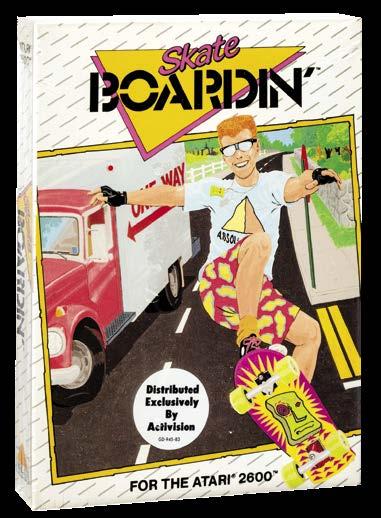
GALE: Were you keeping up with comics at the time?
ROGERS: No, but I had stopped keeping up with comics when I became a professional because working ‘X’ amount of hours a day—at least 12 hours would be my normal schedule, if not more. When I stopped working, I did wanna get out and see what else was happening in the world, so I didn’t follow many comics. And it became fewer and further in-between as time went by.
GALE: Did you call them? Did they call you? What was going on?
ROGERS: Well, when I originally left, I had had some contacts with Andy Helfer at DC Comics, working at Piranha Press. There were a couple of small things that I would do for Andy on an occasional basis when he was doing his series of “Big” books.
GALE: Like what?
ROGERS: Ohhh…The Big Book of Death and The Big Book of Thugs. I don’t remember all the titles. They were 1–4 page little stories on certain subjects. One full volume would deal with death, another would deal with petty criminals, and a roster of very talented people would make contributions to this. And I was one of them in the end there. So that kept me in contact with them. And when I did leave, I did a job for him called… a “real
GALE: Of course, what you’re probably most famous for is the work you did with Steve Englehart on Batman—the famous Joker fish story, which was adapted into animation, and has been reprinted maybe more often than any other Batman story other than the origin itself.
ROGERS: Yeah! I don’t know if that’s exactly right, and while I don’t keep on top of everything, I have seen it reprinted quite a few times, which has been very gratifying, I guess, is the best word to use.
GALE: And because DC pays royalties, it’s good for you in another way.
ROGERS: That’s right! I still do see royalty checks for different assorted works that get published. And not just the American reprints, but sales from around the world, also.
GALE: Well, I think it’s some of the best stuff DC’s ever done that wasn’t written by Alan Moore. I know I’ve read it many times! I think I’ve bought every one of the reprints just for the heck of it. The first time they reprinted it, I noticed that you did the coloring. The original coloring was Jerry Serpe and Glynis Wein and then you took it over.
ROGERS: Well, when they printed the package, they got in touch with me to ask me to do covers for it, and I asked them at the time if I could color the work for them… and they let me. And I was really happy because… there was a certain look that I had always had in mind, even when I was doing the work way back then, working on a comic book page, the color scheme or special effects are in the back of my mind. Unfortunately, nobody is a mind reader and so if you don’t give extensive color notes, then the look isn’t gonna be exactly what had been envisioned as I was drawing it. And this gave me an opportunity to see the work as I was originally planning it to be seen.
GALE: So, in a manner of speaking, the reprints are actually purer to your vision than the originals.
ROGERS: That would be true! And what we’re talking about… The Shadow of the Batman was the title of the series and aside from me getting a chance to color it, it was printed on the Baxter stock paper, which was a lot higher quality, so the reproduction was really far superior to the
Atari videogame Skate Boardin’ with art by Marshall Rogers. © Atari.
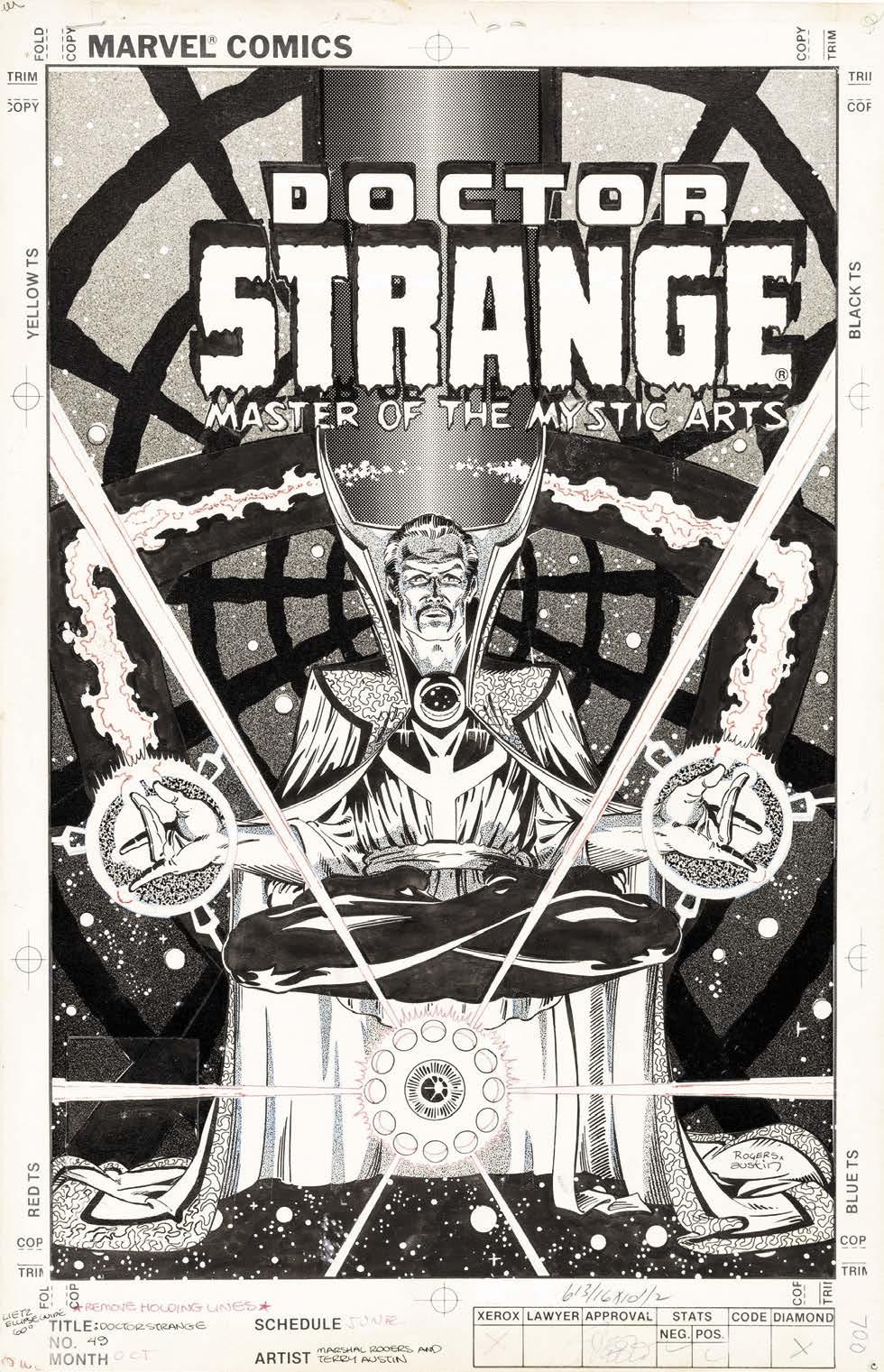
Iconic 1981 cover from Doctor Strange #49 by Marshall Rogers and Terry Austin. (courtesy of Terry Austin)
TIMELINE

1974
Fan Informer #37 (Arvell Jones, fanzine, 1974)
Pin-Up: Vision - 1 page, b&w. P:Marshall Rogers, I:Greg Theakston
1976
FOOM #13 (Marvel, fanzine, Mar 1976)
Pin-Up: Daredevil - 1 page, b&w. P:Marshall Rogers, I:Marshall Rogers
FOOM #14 (Marvel, fanzine, Jun 1976)
Pin-Up: Red Sonja - 1 page, b&w. P:Marshall Rogers, I:Marshall Rogers
Deadly Hands Of Kung-Fu #26 (Marvel, magazine, Jul 1976)
Pin-Up: Bruce Lee - 1 page, b&w. P:Marshall Rogers, I:Marshall Rogers [NOTE: Splash page only to story.]
Doc Savage #5 (Marvel, magazine, Jul 1976)
Pin-Up: Doc Savage: The Man Of Bronze - 1 page, b&w. P:Marshall Rogers, I:Marshall Rogers [NOTE: Splash page only to story.]
Planet Of The Apes #25 (Marvel, magazine, Oct 1976)
Pin-Up: A Taste Of Mutant Hate (Ch. 3) - 1 page, b&w. P:Marshall Rogers, I:Marshall Rogers [NOTE: Splash page only to story.]
Detective Comics #466 (DC, comic, Dec 1976)
Story: Take Me Out Of The Ball Game - 6 pages, color. W:Bob Rozakis, P:Marshall Rogers, I:Terry Austin

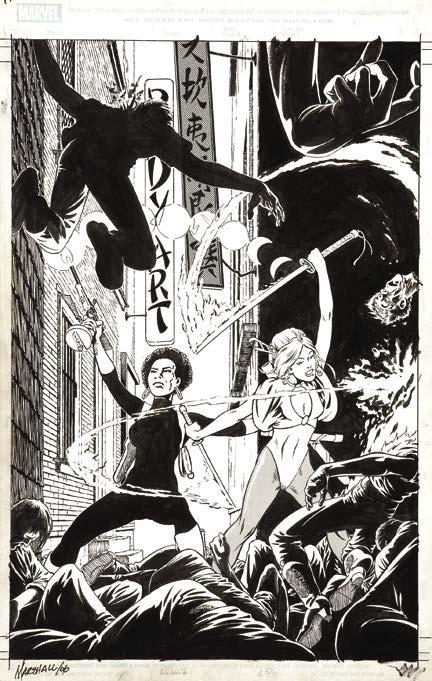
1976 - Deadly Hands of Kung Fu #22, Daughters of the Dragon ad.
1977
Comic Art Convention (NY) (Sea Gate Distributors, program, 1977)
Pin-Up: Face up close - 1 page, b&w. P:Marshall Rogers
Deadly Hands Of Kung-Fu #32 (Marvel, magazine, Jan 1977)
Story: Daughters Of The Dragon, Part 1: (The Giri Of Colleen Wing) - 21 pages, b&w. W:Chris Claremont, P:Marshall Rogers, I:Marshall Rogers [NOTE: No official sub-title to this story.]
Ad: Daughters Of The Dragon - 1 page, b&w. P:Marshall Rogers, I:Marshall Rogers
Detective Comics #467 (DC, comic, Jan-Feb 1977)
Story: The Man Who Skyjacked Hawkman! - 6 pages, color. W:Bob Rozakis, P:Marshall Rogers, I:Terry Austin
Deadly Hands Of Kung-Fu #33 (Marvel, magazine, Feb 1977)
Story: Daughters Of The Dragon, Part 2: Sword Of Vengeance - 20 pages, b&w. W:Chris Claremont, P:Marshall Rogers, I:Marshall Rogers
Weird War Tales #51 (DC, comic, Mar 1977)
Story: A Canterbury Tail - 6 pages, color. W:Paul Levitz/Jack C. Harris, P:Marshall Rogers, I:Terry Austin
Detective Comics #468 (DC, comic, Mar-Apr 1977)
Story: Battle Of The Thinking Machines - 17 pages, color. W:Bob Rozakis, P:Marshall Rogers, I:Terry Austin
1976 - Doc Savage #5 pin-up.
Superman Family #182 (DC, comic, Mar-Apr 1977)
Story: The Stranger - 10 pages, color. W:Paul Kupperberg, P:Marshall Rogers, I:Frank Springer
Rampaging Hulk #2 (Marvel, magazine, Apr 1977)
Pin-Up: Bloodstone - 1 page, b&w. P:Marshall Rogers, I:Marshall Rogers [NOTE: Splash page only to story.]
Weird War Tales #52 (DC, comic, Apr 1977)
Story: Calamity From The Clyde - 6 pages, color. W:Jack C. Harris, P:Marshall Rogers, I:Terry Austin
Batman Family #11 (DC, comic, May-Jun 1977)
Story: Man-Bat Over Manhattan - 9 pages, color. W:Bob Rozakis, P:Marshall Rogers, I:Tex Blaisdell
Comics Reader #147 (Street Enterprises, fanzine, Summer 1977)
Cover - color. P:Marshall Rogers, I:Marshall Rogers
Batman Family #12 (DC, comic, Jul-Aug 1977)
Story: Dread Night Of The Jaguar - 10 pages, color. W:Bob Rozakis, P:Marshall Rogers, I:Terry Austin
Detective Comics #471 (DC, comic, Aug 1977)
Cover - color. P:Marshall Rogers, I:Terry Austin
Story: The Dead Yet Live - 17 pages, color. W:Steve Englehart, P:Marshall Rogers,

I:Terry Austin
Batman Family #13 (DC, comic, Sep 1977)
Story: The Man Who Melted Manhattan (Chapter 2: Twilight Of The Sunset Gang) - 8 pages, color. W:Bob Rozakis, P:Marshall Rogers, I:Bob Wiacek
Detective Comics #472 (DC, comic, Sep 1977)
Cover - color. P:Marshall Rogers, I:Terry Austin
Story: I Am The Batman! - 17 pages, color. W:Steve Englehart, P:Marshall Rogers, I:Terry Austin
Ad: Mister Miracle - 1 page, color. P:Marshall Rogers, I:Marshall Rogers
Mister Miracle (Volume 1) #19 (DC, comic, Sep 1977)
Cover - color. P:Marshall Rogers, I:Marshall Rogers
Story: It’s All In The Mine - 17 pages, color. W:Steve Englehart, P:Marshall Rogers, I:Ilya Hunch [NOTE: Alias for 9 inkers: Marshall Rogers-Mr. Miracle, Scott Free; Dick Giordano-Barda; Mike Nasser-Granny Goodness; Al Milgrom-Kanto; Jack Abel-Highfather; Al Weiss-Oberon; Joe Brozowski-Bedlam; Terry Austin-Vermin Vundabar; Neal Adams-page 1 eyes]
Ad: Mister Miracle - 1 page, color. P:Marshall Rogers, I:Marshall Rogers
House Of Mystery #254 (DC, comic, Sep-Oct 1977)
Story: The Devil’s Plague - 7 pages, color. W:Arnold Drake, P:Marshall Rogers, I:Marshall Rogers
Ad: Mister Miracle - 1 page, color. P:Marshall Rogers, I:Marshall Rogers
Mister Miracle (Volume 1) #20 (DC, comic, Oct 1977)
Cover - color. P:Marshall Rogers, I:Vince Colletta
Story: Eclipse - 17 pages, color. W:Steve Englehart, P:Marshall Rogers, I:Vince Colletta
Detective Comics #473 (DC, comic, Nov 1977)
Cover - color. P:Marshall Rogers, I:Marshall Rogers
Story: The Malay Penguin! - 17 pages, color. W:Steve Englehart, P:Marshall Rogers, I:Terry Austin
Amazing World Of DC Comics #16 (DC, fanzine, Dec 1977)
Wraparound Cover - color. P:Marshall Rogers, I:Marshall Rogers

Detective Comics #474 (DC, comic, Dec 1977)
Cover - color. P:Marshall Rogers, I:Terry Austin
Story: The Deadshot Ricochet - 17 pages, color. W:Steve Englehart, P:Marshall Rogers, I:Terry Austin
Mister Miracle (Volume 1) #21 (DC, comic, Dec 1977)
Cover - color. P:Marshall Rogers, I:Vince Colletta
Story: Command Performance! - 17 pages, color. W:Steve Englehart, P:Marshall Rogers, I:Vince Colletta
1978
Detective Comics #475 (DC, comic, Feb 1978)
Cover - color. P:Marshall Rogers, I:Terry Austin
Story: The Laughing Fish! - 17 pages, color. W:Steve Englehart, P:Marshall Rogers, I:Terry Austin
Mister Miracle (Volume 1) #22 (DC, comic, Feb 1978)
Cover - color. P:Marshall Rogers, I:Marshall Rogers
Story: Midnight Of The Gods - 17 pages, color. W:John Harkness (Steve Englehart), P:Marshall Rogers, I:Rick Bryant/John Fuller
Detective Comics #476 (DC, comic, MarApr 1978)
Cover - color. P:Marshall Rogers, I:Terry Austin
Story: Sign Of The Joker! - 17 pages, color. W:Steve Englehart, P:Marshall Rogers, I:Terry Austin
Imagine #1 (Star*Reach Publications, comic, Apr 1978)
1977 - Comic Reader #112 cover.
1977 - Amazing World of DC Comics #16.

A NEW DAY DAWNS
An Appreciation of his Artistic Legacy
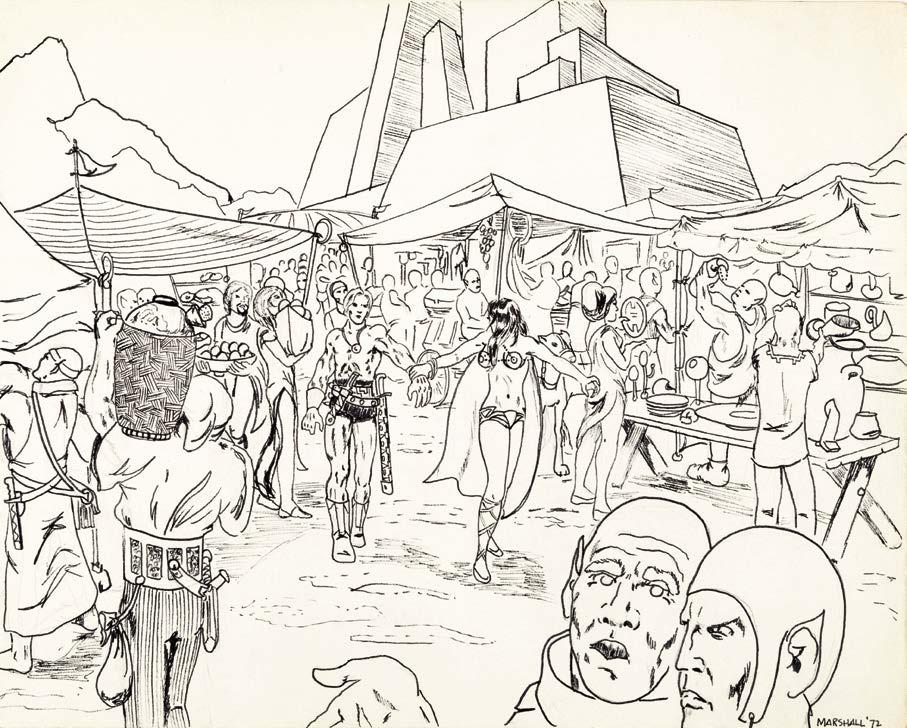
IF YOU ENJOYED THIS PREVIEW, CLICK THE LINK BELOW TO ORDER THIS BOOK!
1972 - Sci-Fi/fantasy illustration.
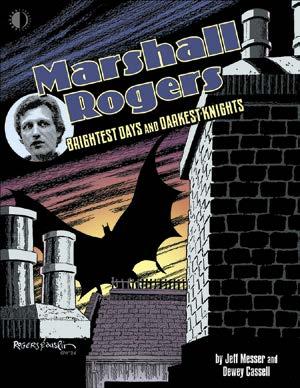
MARSHALL ROGERS: BRIGHTEST DAYS & DARKEST KNIGHTS
By JEFF MESSER and DEWEY CASSELL
From underdog to icon, MARSHALL ROGERS helped redefine Batman for generations, inspiring readers and up-and-coming artists alike. Initially savaged by editors at DC Comics, his style was uniquely complex with vast and angular architectural design anchoring his storytelling, and it immediately caught on with fans for his depictions of the Darknight Detective, Hugo Strange, The Joker, Silver St. Cloud, Dr. Strange, Cap’n Quick and a Foozle, and more. And though his output was relatively small in comparison to many of his contemporaries, his impact outlived the artist himself, and inspired a loyal following and affection. Now, Rogers’ story is told by friends, collaborators, and family members, delving deep into a complicated and conflicted man and his art, as we feature inker TERRY AUSTIN, friend and fellow artist MICHAEL NETZER, DAN GREENFIELD’s extensive interview with writer STEVE ENGLEHART (conducted for 13thDimension.com), and others recounting their time and camaraderie with Rogers, alongside an in-depth interview with Marshall himself, and a wealth of art both familiar and rarely seen. Written by JEFF MESSER and DEWEY CASSELL (authors of the Eisner Award-nominated Mike Grell: Life Is Drawing Without An Eraser), this book shines a light on the fan-favorite artist’s brightest moments and darkest days. Featuring a new cover collaboration by MARSHALL ROGERS and TERRY AUSTIN!
(160-page FULL-COLOR HARDCOVER) $37.95 • (Digital Edition) $13.99 • ISBN: 978-1-60549-130-1 https://twomorrows.com/index.php?main_page=product_info&cPath=95_93&products_id=1856

1977 - Character sketch for Imagine #1 (Star Reach publications).
